Business
Southbound Avenue – A Lesson On Patience
Don’t be impatient and too much in a hurry. It’s a Southbound avenue journey and adventure to do so. Don’t go South, be patient. Learn patience in your process to become your best self ever. Persist in patience always. Embrace the prospect of growing in patience. Success comes to the patient.


In Breaking Financial Fetters, I had mentioned that my impatient nature and a quest for some quick bucks in 2016 got me excited about Binary Options Trading. As a young investor, I needed to be schooled by time and life in patience. I first started my Binary Options trading by opening a trading account. I registered with the platform, iq options, which was quite popular in Europe and Africa but isn’t available or accessible to United States clients.
“Patience is a bitter plant, but it bears sweet fruit.” — German Proverb.
I started by trading with smaller amounts like $5 and $10 because I subscribe to the cliché “only trade with money you can afford to lose.” I had big dreams of making huge profits in United States Dollars (USD). This prospect, I believed, would make me rich when I convert future USD earnings to my local currency back in Nigeria. I was motivated to make it then and now. It’s not enough to have big dreams. It must generally be accompanied by motivation in other to attain your objectives.


I shared my adventures with Binary Options on social media, especially on Instagram. I really did believe I’d found the holy grail to earning via Forex while in a Third World Country. Yes, I made profits sometimes, and I lost money sometimes too. I really enjoyed the adrenaline rush that came with entering a trade and hoping it closes in your favor in the next few minutes. This was pure gambling, now I realize. I must confess that I lost more money than I made. The odds were not always in your favor, to say the least.
According to Investopedia, Binary Options are “financial options that come with one of two payoff options—a fixed amount or nothing at all. That’s why they’re called binary options—because there is no other settlement possible. The premise behind a binary option is a simple yes or no proposition: Will an underlying asset be above a certain price at a certain time?”


Basically, you look at the price chart of the asset you wish to trade. You then decide if you believe the price will appreciate or depreciate in the next 5 minutes, 10 minutes, 15 minutes, or by the end of the day/week. In my opinion, that is mere gambling or the practice of playing at a game of chance for money or other stakes that may be in question. Why? Because no proven strategy supports any options trader’s analysis of the direction, an asset’s price will go in a short time frame.
A lot can happen within a short timeframe to cause an asset’s price (e.g., Bitcoin) to reverse course (temporarily) in a short time frame. It is a very volatile proposition that is hard to predict. Trading via Binary Option is no different from visiting a casino to gamble or going to your local convenient corner store to buy scratch tickets or lotto. By the way, this can quickly become very addictive. Two outcomes are possible, you either make some money or lose money. In most cases, you lose more often than you win—it is a southbound avenue journey and adventure. This is precisely what you’ll encounter trading via any platform that entices you with the possibilities of quick profits.


Take a cursory look at all the internationally recognizable wealthy people you know. Regardless of their race or nationality, there is one unique factor with each of them. The factor is that none of them became financially independent by trading Binary Options. From Elon Musk to Jeff Bezos, Mark Zuckerberg to Bill Gates. Binary Options isn’t as popular in the United States and Canada as investing in stocks and Exchange Traded Funds (ETFs). Suppose Binary Options weren’t an unreliable avenue to wealth. In that case, I am confident that it would be more accepted in the United States than it has been for many years.
The fact is that there really is no shortcut or quick pathway to genuine, long-lasting wealth and financial freedom. Suppose you truly desire to achieve your dream of financial independence. In that case, you must be ready to nurture the virtue of patience alongside embracing the assiduousness of hard work and intelligent work, as long as it takes. We live in a fast-paced world today, and many people lack patience. Everybody wants to make it big in an instant. However, on many occasions, life does not always work like that. A German Proverb stipulates that “Patience is a bitter plant, but it bears sweet fruit.” Hence, I urge my readers to learn patience and bear the positive fruit of it in time.


In our quest for genuine wealth or financial freedom, I believe it is noteworthy to study the life and investment habits of financially independent individuals who inspire us. How did they begin their journey to wealth? Did they identify a communal or global need and focused on providing a solution to it? How have they grown or sustained their wealth? Did they diversify their earnings by investing in other businesses with huge growth potentials? However, the common denominator of all who have succeeded is patience. They perfected their craft through patience and have become their best selves. In the wise words of Leo Tolstoy, “The two most powerful warriors are patience and time.” Make sure they are serving in the barracks of your process.
“Learn patience in your process to become your best self ever. Persist in patience always. Embrace the prospect of growing in patience. Success comes to the patient.” — Ogbonnaya Agom-Eze.
Having identified that, a pathway to financial freedom which appears promising and lures us with potentials of quick profits—in the short term—usually ends in regrets and loss of finances. Maybe it’s best to make changes to our plans for success and financial freedom by thinking long-term. Play the long game once you have plotted the right strategy for your process of becoming your goals. Move forward by identifying trusted and tested vehicles guaranteed to get us there in time.
Business
Giant of Africa’s Soaring Synergy with China – Shots & Jams
The substance of Nigeria-China relations has grown in leaps and bounds over the years. Today, bilateral relations between the African and Asia giants have metamorphosed from humble beginnings to more robust frontiers of international cooperation. How can Nigeria move towards a more strategic diplomatic partnership in the nearest future? Please read all about it here.


Over the past fifty years, Nigeria and China have enjoyed mutual respect, trust, and support in various fields, which have yielded promising results. Both countries have a long history of friendly relations and cooperation, which are an integral part of what is popularly known as China-Africa cooperation and South-South cooperation. Besides being the single largest trading partner to Nigeria, the relationship between the countries has gone beyond Nigeria being just a provider of raw materials to China. Development partnerships are expanding into Information and Communication Technology (ICT), modern Agro-Allied businesses, security, banking, satellite and digital development, health, etc. Several institutions and programs have been established in both countries to promote achievements in these sectors.
“I am a true believer that the success of the world in development and peace depends on Africa’s success, and China’s cooperation with Africa is fundamental for Africa’s success.” — Antonio Guterres (Secretary-General of United Nations).
Per Reuters, in September 2018, Nigeria signed about a $328 million loan with China to heavily boost telecommunication infrastructure development in Nigeria. According to the Vanguard, in 2019, the bilateral trade between Nigeria and China reached $19.27 billion. China financed a series of projects in Nigeria, including the Abuja-Kaduna railway, Port Harcourt Airport terminals, Lekki Free Trade Zone, Zungeri Hydro-Power Dam, University of Transportation, Daura, to mention but a few. In exchange, Nigeria often hired Chinese firms to oversee its development projects, such as the Mambila Hydro-Electric Power Station in Taraba State.


There is a unique semblance between Nigeria and China in some respects. For instance, both countries have certain similarities, including multiple ethnic groups that practice various religions. Another noteworthy political fact is that both countries celebrate their national day on the 1st of October. In reputation, Nigeria is the most populous country and largest economy in Africa, while China is Nigeria’s counterpart in Asia in this regard.
The People’s Republic of China (PRC) is considered one of Nigeria’s most important trading and export partners. The PRC is one of the world’s largest importers of Nigeria’s crude oil. Nigeria is benefiting from infrastructural development and a great deal of financing offered by China, especially in railway and transportation development. The procurement of military hardware to counter insurgency in parts of the country is another benefit Nigeria is garnering from the PRC.


Historical conditions and factors guide strategic relationships between the two countries, with an underpinning of economic interests, political and diplomatic security, and other priorities. The historical angle relates to the Bandung Conference, the first time Chinese communist leaders had exposure to African leaders. Following those meetings, the then Premier of China, Premier Zhou Enlai, and Vice-Premier Chen Yi visited ten African countries between 1963 and 1964. The visit solidified political and diplomatic relations between China and Africa. It took twenty-six African countries to consolidate this gesture around 1971 to allow China to gain admission into the United Nations (UN).
On the 10th of February 1971, Nigeria established an embassy in China. That was the beginning of that relationship characterized by mutual strategic cooperation, a symbiotic relationship at best. In the “Africa in China’s Foreign Policy” research by Yun Sun of the Brooking’s Institute, the 1989 Tiananmen Square Incident (i.e., the Chinese crackdown on pro-democracy demonstrators that turned deadly) virtually isolated China from the rest of the world. We could see that these were turbulent times in the PRC.


In the Brooking’s Institute Study, some Southern African countries (i.e., Botswana, Lesotho, Zimbabwe, Angola, Zambia, and Mozambique) opened the gate for China to re-engage with the world by inviting then China’s foreign minister, Qian Qichen, to visit some African countries. Since then, China has decided to establish a strategic partnership with Africa. Since then, the PRC’s reciprocating gesture ensures that every Chinese foreign minister’s first visit outside China every New Year is the African continent since 1991. Insofar as this is concerned, frameworks like the Forum on China-Africa Cooperation (FOCAC) in 2000 support this synergy, which led to China’s adoption of specific engagement strategies.
Recently, Nigeria-China (Sino) relations have come under criticism concerning how mutually beneficial the underlining principles and core values of diplomatic relations have been. Nigeria is experiencing a jam in this relationship. The Giant of Africa is yet to fully tap from the Sino-Nigeria trade relations in critical areas such as trade, knowledge transfer, the building of industries, Small to Medium Enterprise (SME) development, and job creation. Nigeria exports cassava, ginger, cashew, hides, skin, and even toothpicks to China. But there are more of China’s toothpicks in circulation in Nigeria than Nigerian toothpicks in China. China will be a good market for Nigerian textiles. But Nigeria’s potential in textile and hides and skin is yet to be fully tapped to gain a comparative advantage in exports with China. Such results in a series of trade imbalances between the two nations. For instance, Nigeria imports about ten times more than its exports to China despite China’s population of over one billion to Nigeria’s two hundred million.


Chairman Mao recognized that a vast population without effective demand is like a hip of sand. It is not enough to have a considerable population. It is essential to create genuine demand in this vast population. A shot to their credit, China’s structural reform has met the supply and demand side, knowing that a population does not constitute a market except there is adequate demand. From the first time of its market reforms, China began to appreciate that demand and improving the citizen are central to making China attractive. Another shot to China’s credit is the relative labor cost was the foundation of China’s modernization—cheap labor attracted foreign investment. Such a factor in the synergy of both nations makes Nigeria’s economy over-reliant on inexpensive imports from China to sustain itself, costing it thousands of jobs in the textile, manufacturing sectors, a jam to its economic and development process, among others.
“The reason for having diplomatic relations is not to confer a compliment, but to secure convenience.” — Winston Churchill.
From sources of Nigerians living in China, there are instances where some of these individuals staying in China tried in vain to register their businesses, another jam in this relationship between the two nations. There are markets where an African can’t locate a shop in China. The Wall Street Journal reported a 2012 protest by Africans in Guangzhou over a Nigerian who died in police custody. Africans took to the streets in China because of the attacks against them.
The underpinning words to some of the jams in the synergy of both nations are inconsistency and lack of focus, which have affected Nigeria’s planning, implementation, and vision. We have so many policies for engagement with partners who are sometimes bewildered at the purpose of their enactment and development and for how long successive governments have pursued them.


After the 2015 Forum on China-Africa Cooperation (FOCAC) in Johannesburg, the Chinese President outlined ten cooperation plans and provided $60 billion in funding support. Nigeria, suffering from indecision or lack of planning jam, couldn’t identify its areas of interest to partake in the fund. The disbursement of this fund was on a first-come, first-serve basis. However, countries like Rwanda, Kenya, and Ethiopia outlined areas of cooperation, and they got the funding. When President Xi Jinping outlined the Belt and Road Initiative (BRI), a massive framework of connectivity between countries, a re-invention of the “Ancient Silk Road,” Nigeria didn’t take advantage of such international public good to address its infrastructure deficit. The lack of initiative is another logjam in its progress. The initiative was a broad global engagement strategy featuring mutual consultation, contribution, and shared benefits.
The Asian Infrastructure Investment Bank (AIIB) focuses solely on filling the infrastructure gap in Africa and developing countries. Over a hundred countries, including some European countries, expressed interest in the bank, which according to reports, sits as the most capitalized bank after the World Bank. About ten years since that bank’s founding, Nigeria is yet to access resources in the bank, once again another jam to Nigeria’s discredit in the Sino-Nigerian synergy. Apart from the liquidity provided by this bank, the institution is said to be the new international financial architecture. It seems Nigeria is not yet strategically positioned to engage China in different aspects of national development.


The McKinsey Group projected that by 2030, Nigeria would be the 20th largest economy in the world given all the ideal circumstances. To ramp up strategically with China and achieve an inroad into its economy, Nigeria must improve on governance and strengthen its capacity for planning and implementation. Nigeria needs to create clusters around energy, agriculture, infrastructure, transportation, and water resources. The aggregate utilization of all these clusters will make Nigeria a large economy from where investments, especially from China, can come into the country.
“Players have a great deal of flexibility when conducting diplomatic relations with their allies.” — Mike Simpson.
In 2016, according to Legit, President Muhammadu Buhari and President Xi Jinping signed various Memorandum of Understanding(s) (MoUs). The MoUs covers a “Framework Agreement Between the Federal Ministry of Trade and Investment of the Federal Republic of Nigeria and the National Development and Reform Commission of the Peoples Republic of China.” Others were on Aviation Cooperation, Scientific and Technological Cooperation, and a “Mandate Letter Between the Industrial and Commercial Bank of China and the Central Bank of Nigeria on Renminbi (RMB) Transactions” was also signed.” The MoUs are suitable platforms on which Nigeria’s diplomatic, political, economic, security, and trading relationships should premise upon, to say the very least. That documents provide specific leverages that Nigeria can take advantage of to expand its opportunities in China.


Nigeria must take a shot in finding a niche in the PRC. As a nation, Nigeria must explore its light crude oil and make its trade more robust. The PRC has virtually an insatiable appetite for it and uses it for industrial purposes. In the solid minerals’ component of Nigeria’s export, China requires a lot for its development—iron, manganese, bauxite, aluminum, among others. We are not just going to dig out these raw materials and send them to China, but we should insist on value addition before exporting.
In the Sino-Agro-macrocosm, Chinese maize import from the U.S. alone amounts to tens of millions of tons, providing feed for its livestock and human consumption. Nigeria could take a shot at meeting some of those requirements. We should have access to documents that articulate what the Chinese economic outlook is. The hope is that the collaborative project between the National Institute for Policy and Strategic Studies (NIPSS) and the Chinese Ministry of Foreign Affairs will address Chinese concessionary loans and grants, investments, trade imbalance, investment in infrastructure, among others.


Equally heartwarming is the recent agreement signed by Nigeria’s Ministry of Foreign Affairs and China. The document led to the setting up of an intergovernmental committee on diplomatic relations. The committee’s primary aim is to take the shot in streamlining all agreements with China, which will create a platform whereby every agreement with China will be looked at by the relevant department, ministries, and agencies. They will make inputs into the implementation of specific clauses, articles, and provisions in all agreements.
Nigeria must back up its agreements with funding which a monitoring component will follow up. There must be an analysis of who implements what within the content of the deal. For instance, the Central Bank of Nigeria (CBN) in 2011 reached out to China to establish a framework for currency swap to reduce our dependency on the US dollar and other western index foreign currencies. They want us to admit the people’s renminbi (RMB), the Chinese currency, as a currency of reserve deposit by the CBN. Also, in 2018, the CBN held large sums of RMB in reserve. Between 2011 and 2018, the swap exchange between CBN and the People’s Bank of China amounted to about N7.2 trillion for development projects.


China is a world superpower on a mission. The PRC has its sights on Africa, and Nigeria to be precise. In the words of the current premier, Xi Jinping, “China will always remain the builder of world peace, a contributor to global development, and upholder of international order.” From this piece, we see various aspects of how China is funneling funds into the development of Africa. For Nigeria to benefit maximally from China, she must see all aspects of this synergy with the PRC. Nigeria must take all the shots and eschew as many jams as possible to become a top beneficiary of this synergy.
“True relations never break, and relations which break were never true.” — Abhishek Shukla.
To maximize its potential in the soaring synergy with China, Nigeria must be decisive in knowing what the nation wants from the relationship. By so doing, Nigeria will ensure that it does not sell its economic soul to the colossal Red Dragon that is soaring onwards and upwards in global economic dominance. Nigeria can mitigate the trade imbalance currently in favor of China if it prioritizes its financial relationship to increase the manufacturing capacity, value addition, and understanding the global value chain mechanism.
Author Note
[The facts of this piece spawn from discussions with Amb. Usman Sarki of the National Institute of Policy and Strategic Studies (NIPSS), Center for China Studies, Kuru, Plateau State, Nigeria. If you have more facts on this piece, please kindly respond in the comment section].
Business
5 Wrong Ways to Validate Your Business Idea
It is one thing to have an idea, and it is another thing to validate or prove that your idea is worthwhile. It is imperative to know the wrong ways of validating your business ideas that you should avoid. Please, read all about it!


Ideas are the nuggets that inspire change. Ideas are the catalysts that can change the world. Ideas are the nucleus of businesses—without ideas, there will be no businesses. In the words of William Feather, “Wealth flows from energy and ideas.” In the words of Ogbonnaya Agom-Eze, “Ideas are the mitochondria of businesses.” The correct management of these businesses eventually leads to great wealth.
“Ideas are the mitochondria of businesses.” — Ogbonnaya Agom-Eze.
Every business idea needs validation or proofing to ensure its eventual viability. Failure to do so could lead to time loss and resource wastage when the target market does not buy into the idea. So, incorrectly validating a business idea can discourage a great thing from happening, which is not what you want. You want to prove it right so it can take on a life of its own. To learn more, read on for more insights. Let’s go:
#1. Believing You are the Only One with the Idea


Let’s face it. There are many people on the planet with many business ideas, and there are chances that no one person owns a single idea. Okay, let us narrow it down to your specific location and not the entire planet—there is still someone within that country or city with a similar idea to yours. It may not be verbatim but could be so close to yours. Someone out there is doing something like what you are planning to do.
“To be able to validate your business or start-up idea, real-time market research is the ideal way to fetch data.” — Sys Qube.
Have you ever planned on carrying out a business idea, and somewhere along the line, you stalled, or you see an advert of something very similar to what you’re doing, and you are like, “that was my idea?” No, that was not your idea, and the precursor of the one you are seeing did not steal your idea. Meaning that someone else is thinking the same or even doing it when you think of doing something.


A lot of people validate their business ideas by believing they are the only ones doing it. As such, they fail to do market research on the concept to discover competitors running similar ideas. Market research helps you weigh your pros and cons and help you see how your competitors run their businesses. Furthermore, doing so enables you to discover the weaknesses of your competitors so you can have the upper hand by improving on the existing product or services.
The key to correctly validating or proofing your business idea is research, research, and more research. It would be best if you did your due diligence in deeply scanning the market to see what is out there in the niche you hope to venture into eventually. It will do you a lot of good. Once you are done and realized how you could make your product or service offering better, you can move on to planning, developing, and implementing that concept.
#2. Afraid of Idea Thieves


You have discovered that your idea can work. But it would be best if you still were very sure about it. However, you’re afraid of idea thefts by friends or colleagues who may steal the idea. Because of such paranoia, you decide that there is no need to get people’s opinions. However, this is a wrong validation move because feedback is critical before moving on to the following stages of planning, development, and implementation.
“Picasso had a saying— ‘good artists copy; great artists steal’ —and we have always been shameless about stealing great ideas.” — Steve Jobs.
Talk to people you trust and get honest feedback from them. The truth is, they will point out some things you didn’t put into consideration, and that can save you from making colossal start-up mistakes. You may think your idea is solid, but some pointers can help you reassess and strategize. You’ll be thanking your family and friends later for the honest opinions. Most importantly, let go of the fear of idea-bandits and be open to receive constructive criticism without going all defensive.
#3. Not Testing Your Product Because You Believe Everyone Needs It


Please, do some testing—don’t leave anything to chance. Please do not put a product out there without testing it. By testing the product’s viability in the potential markets, you feel whether the product will gain some acceptance to its potential consumers. In addition, you can attend start-up events to showcase your product to attendees and get feedback on the spot. Your friends can also give you honest feedback to know if to trash the idea or progress with it.
“Never stop testing, and your advertising will never stop improving.” — David Ogilvy.
Another way to test is to run mini ads to your target audience or reach out to a micro-influencer to showcase your product to their audience and watch its reception to that fanbase. The feedback you get will determine if to go to the next step or not. Another intelligent thing some start-up entrepreneurs do is create a questionnaire or run a survey to gather data from their target audience to ensure that the product will serve the intended market, all things being equal.
#4. Delaying the Building Process
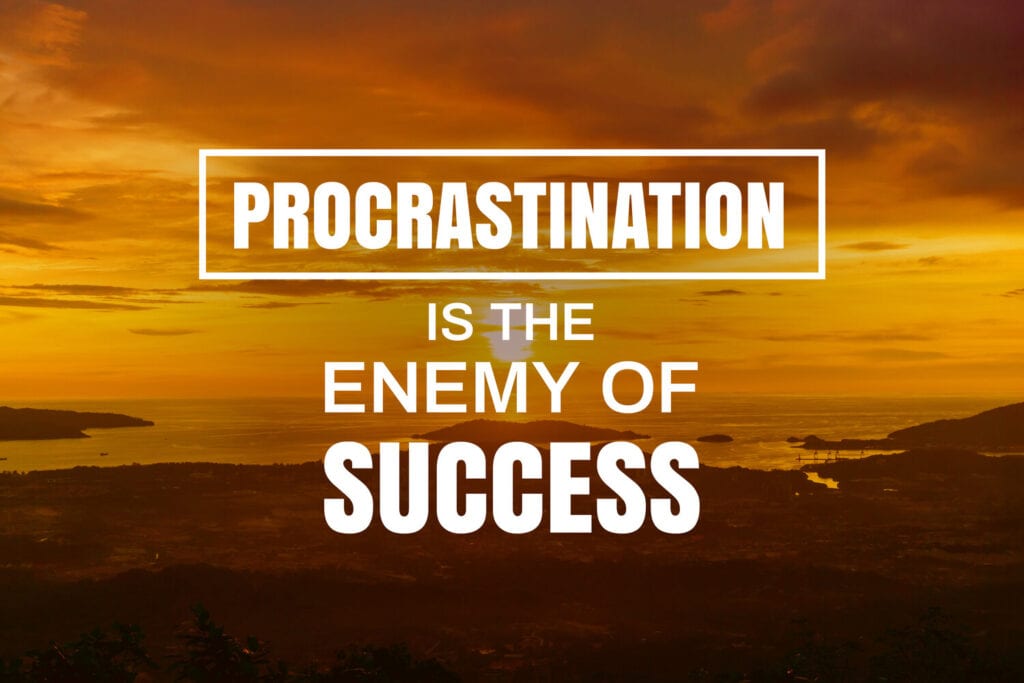

Congrats, your testing went well, and your business idea is valid. But you’re stalling on the project because you believe it will wait for you. This wrong move could eventually make you see your product on a shelf someday by a swift entrepreneur who never stalled. As earlier stated, you alone do not own a business idea. However, you can be the first to market it, which means you have to get a unique domain name quickly, start branding, and secure your business name on social media platforms. However, you can seal the idea as yours if you are the first to trademark the concept.
“You don’t build a business. You build people; then people build the business.” — Zig Ziglar.
After trademarking or copyrighting the idea, you must start making quick moves to market and build a customer base. The truth is when you delay in making marketing moves after your test is successful, someone might already be out there cashing out on the same idea. Before you know it, the idea would quickly be obsolete. Once you have created your logo, secured your domain names for your web presence, and created awareness on social media, you can hire the best hands to help you build the idea into its mature state. Stop delaying your concept. Remember, procrastination is the enemy of success.
#5. Not Creating Strategies to Sell


You have done the above correctly, but you don’t know how to sell, and you do not have a customer acquisition plan. Many great business ideas are flushed down the drain because there are no marketing strategies to help the business scale. The business idea is good, and the product is fantastic. However, your business or service cannot sell itself. It would be best if you did yourself a solid to do a massive market push. Else competitors will clamp down on your fabulous offering and push you out of business.
“The path to the CEO’s office should not be through the CFO’s office, and it should not be through the marketing department. It needs to be through engineering and design.” — Elon Musk.
How will you get your first customer? How will you build a strong community of loyal customers? What are your strategies to make people look away from your competitors and rush to buy from you? What promotions are you running? Do you have a reasonable marketing budget to start with from the onset? If you don’t have enough resources, are you using the traditional door-to-door solicitation in the modern world? Do you have answers to these questions and more?


The goal is to have a strategy to sell. Milan Kundera, the Czech writer, once said that “Business has only two functions—marketing and innovation.” As soon as you innovate and birth an idea, it would be best to market it to sustain its life and maturity. Failure to do so is to stagnate the idea and stifle the life out of it. Not having a strategy to sell the concept that has come to bear is a sure path to the destruction of that idea, ceteris paribus. For a business to stand, you must innovate, develop, and implement it. Then it would be best if you marketed it to give it its momentum.
So, do yourself a solid and map out your strategies and start selling. It will be challenging at first because great things take time to establish. But that is perfectly okay; it’s all part of validating or proving that the idea is a worthwhile one. Always remember that marketing your concept is the livewire to any successful business. One customer at a time, and you are on your way to becoming the next big thing in the market.


It is one thing to have an idea, and it is another thing to validate or prove that your idea is worthwhile. In this piece, we have seen five wrong ways to validate your business idea. First, you may fool yourself by believing you are the only one with the idea. Someone somewhere may be thinking in the same line as you are. Second, you are constantly afraid of idea thieves that you fail to implement your idea.
“Every wish, every dream, every idea comes to existence only through blood, sweat, and sacrifice.” — Ivan Moody.
Third, you must test your idea to validate its worthiness. Failure to do so may throw a wrench into your process of keeping the vision alive. Fourth, delaying the building process is the wrong way to validate your business idea. Delay the say is dangerous. You can lose it all while you are busy procrastinating. Finally, the fifth point is not having a well-thought-out and laid-out strategy to sell and market your idea. Beware of these five wrong ways of validating your business idea, and you may have a chance to become the success story of tomorrow.
Business
7 Lessons Entrepreneurs Can Learn from Shark Tank
Shark Tank is an award-winning TV show for entrepreneurs and aspiring business owners. It is currently in its twelfth season and a worthy show to watch. In this piece, we present the various lessons that budding entrepreneurs can learn from the TV show. Please read all about it.


Shark Tank is an award-winning TV show for entrepreneurs and aspiring business owners. It has become a widely watched TV show in the United States and across the globe. Now, the show features a star-studded cast of Main Sharks and Guest Sharks that make it entertaining and exciting. The Main Sharks are Barbara Corcoran, Mark Cuban, Lori Greiner, Robert Herjavec, Daymond John, and Kevin O’Leary. They are also the Executive Producers of the show and a host of other personalities. Some Guest Sharks that we have seen appear on the show are Daniel Lubetzky, Blake Mycoskie, Kendra Scott, Alex Rodriguez, Ashton Kutcher, Chris Sacca, to mention a few.
“I get this all the time, which is crazy: ‘I want to be rich. What kind of company should I start?’ You can’t do that. It doesn’t work like that. You’ve got to be good at something and not only be good at it, but you’ve got to love it, and then you’re willing to work and do whatever it takes.” — Mark Cuban.
The Shark Tank Show is currently on its twelfth season at the time of this writing. The first episode aired on August 9, 2009. The show airs in the United States on the American Broadcasting Company (ABC) Network. In the United Kingdom, the show airs on the BBC and UKTV Networks. In Canada, it airs on Bella TV. The Shark Tank Show brings investors and small business owners together, but your idea or business project must be innovative to get you on the show as an entrepreneur. This TV show has a lot of lessons, and I’ll be sharing a few.
#1. Witticism Must Be Spontaneous


Wit is cerebral. In a way, it can also be evidence of one’s sanity. Wit is a pivotal element that ensures all endeavors of humans come to fruition. In the banalest sense of the word, it is the keen perception and cleverly apt expression of those connections between ideas that awaken amusement and pleasure. So, don’t be stoic in your presentation. Make it a fun process.
“Wit is the salt of conversation, not the food.” — William Hazlitt.
The type of wit we mention here is the type that is associated with the intellectual output of a refined speech. It is a kind of speech design that mildly perforates the ears of the superior listener for a conclusion that would elevate both parties’ status to greater heights. So, as you present your pitch, make it fun, persuasive, and factual.


One does not have to flinch or fidget when trying to be spontaneous with wit. However, there must be a certain kind of tranquility in mind, so the experience does not end up being harrowing for the entrepreneur. It is a quality that we learn from watching Shark Tank—from the Sharks and the entrepreneurs that strike a deal.
#2. One’s Ideas Must Be Original


There is always something unique when something has a somewhat avant-garde feel to it. Originality makes the creator proud and filled with satisfaction and, most of all, happy. If all novels or books had the same storyline, we would not have had distinctive names like William Shakespeare, Charles Dickens, Robert Louis Stevenson, etc. Variety and originality are the spice of life.
“Creativity is thinking up new things. Innovation is doing new things.” — Theodore Levitt.
The Sharks like and enjoy it when they hear novel ideas about what the entrepreneur is striving to venture into—it catches their attention. It convinces the Sharks to take a leap of faith and fly out of a plane with the entrepreneur without a parachute, knowing the landing surface would be softer than the softest bed.
#3. It Pays to Be Peppy


Optimism is present when one is peppy or lively. This sort of attribute inspires confidence and enables people to have a great deal of confidence in someone. I think it is difficult to imagine someone with a dreary demeanor making a striking impression on the Sharks. Even if one is naturally an introvert, the boisterous side needs to be out front and center when coming up against the Sharks. Why? Because the sharks want some enthusiasm to follow what the entrepreneur is saying.
“If you’re quiet, you’re not living. You’ve got to be noisy and colorful and lively.” — Mel Brooks.
The fact is that you cannot invest in a business if you find any hint of a bleak surface on the entrepreneur. On the other hand, you want to invest your hard-earned resources in a venture that the pitcher is uber excited about at the end of the day. So generally, it is imperative to have an upbeat disposition, as it would open doors with the most elaborate locks and mammoth look. Finally, a peppy nature offers a more optimistic outlook for the entrepreneur, but it does not help when it leads to some frenzy. So, it must have the right balance.
#4. One Needs a Futuristic Mindset


No one knows the future, which makes it a somewhat weird situation with an imagined ominous atmosphere. Except one has prognosticative powers, the future looks like a dull vortex spinning and causing images to look distorted in perception. So it is uncertain, hence the need to think ahead of our times. But a great mind can at least prepare for it with the right intellectual approach and possibly design the future and time with distinctive brilliance. That is where a futuristic mindset that thinks outside the box comes to play.
“Progress lies not in enhancing what is, but in advancing towards what will be.” — Khalil Gibran.
It is essential to try and gaze beyond the horizon when setting out to beat life and not just when one wants to come up against the Sharks. There is some danger here for the Sharks because their money could easily find its way into the wrong hands. The Sharks need the entrepreneur to sound ahead of his/her time. There is no such thing as a free lunch in the financial world of business—they need to be sure they are getting the return on their investment. Losses could look like a waterfall of cash, cascading into an imperious-looking pit of fire that would quickly deplete the hard-earned funds of this world.


Having a futuristic mindset would keep one from being obsolete and instead gives one continual relevance. A futuristic mind never goes bankrupt of ideas. The greatest artists last for decades because of their relentless innovative prowess of always staying ahead and setting the pace and standard. Even when younger talents emerge and look like a threat to their creative existence, they are still the ones to beat because they always look beyond the present.
It is dangerous to be satisfied with the status quo. The reason is that somewhere, someplace, in some alley, on some street, another intellectual mind is lurking and waiting to topple whatever visionary idea you have put out to the universe to buy recognition and relevance. So, being complacent might seem comforting, but it is very inauspicious for the future. It is a grave mistake to make. Once the entrepreneur thinks of the future, he thinks the best, and such thoughts delight the Sharks, and they won’t have to feed nefariously on the entrepreneur.
#5. It is an Eye-Opener for Nascent Business Minds


Business is more complex than how it looks on the outside. Of course, the veterans in this field know that. But the same cannot be said about the newbies. The odd thing is, even those with higher knowledge and experience still falter when they come up against the Sharks on the show. So, it is safe to say business newbies are the ones who watch the show more. Because even without them participating, it is a rare window showing them how the business world looks.
“The real voyage of discovery consists not in seeking new landscapes, but in having new eyes.” — Marcel Proust.
So, the clever newbies would see the Shark Tank TV Show as a sort of business school. But, of course, the Sharks themselves are the tutors. After all, they are the ones with uber-successful businesses and the funds to spare to invest in up-and-coming companies. Hence, the budding business minds can add to their already existing and possibly, rudimentary business ideas and take it several notches higher for their business ambitions to head towards sublime routes. A new mindset will always bud new results.
#6. Make Valid Points Immediately


Suppose one has a creative mind but lacks financial support to achieve spotlight status. In that case, the ideal thing is to immediately play the right guitar strings to hypnotize any wealthy listener willing to listen to you. It is not a time to ramble and stipulate facts of no consequence. It is time to hit the nail on the head with the Sharks’ points wants to hear. It is imperative that you also know the numbers and data that back your claim as to why you are asking for the support that you seek.
“It is not time to play the game of circle; it’s a time to play the game of direct, straight to the chase. Make your valid points immediately. Go for the jugular; deliver the punch that matters.” — Ogbonnaya Agom-Eze.
Movies and Musical performances that continue to send consumers to utopia do not happen because of the stylish look of the movie’s poster or the impressive artwork of an artist’s music album. It is because it grabbed the consumer’s attention within the first few seconds of the performance. In the words of Ogbonnaya Agom-Eze, “It is not time to play the game of circle; it’s a time to play the game of direct, straight to the chase. Make your valid points immediately. Go for the jugular; deliver the punch that matters.”


Since several other entrepreneurs are in the queue and eager to speak their innovative minds, being succinct when trying to be persuasive is of enormous importance. Being terse and direct in your presentation would determine if the entrepreneur’s metaphorical vehicular idea will get a boost forward or backward. However, the fact remains that a car looks better when driving forward. So, it should stay that way. Be terse, factual, and direct. Forward ever, backward never.
#7. It is Didactic


Being didactic is one is self-explanatory. The show makes you examine yourself and exhibit a liberal mind. The essence is for you to learn, watch, and choose the best path in life to reach the mountain’s peak, where individuals who want to get the apex of their lives want to be, all things being equal.
“Learning never exhausts the mind.” — Leonardo da Vinci.
The Shark Tank Show is profitable for instruction. You learn from those who end up striking a deal with one or a couple of the Sharks. Also, you learn from the mistakes of those who bungle this opportunity of meeting with the sharks. This show helps you examine your business so you can measure the level of value you’re giving out and analyze the impacts.


The Shark tank show is indeed full of business lessons. This TV show teaches us that witticism must be spontaneous and one’s ideas must be original. It pays to be peppy, and one needs a futuristic mindset when running a business. Also, it is an eye-opener for budding business minds, and it’s ideal for making valid points when pitching to investors. This show helps you examine yourself as an entrepreneur, and it’s worth watching.
References
- Shark Tank Featured Image Photo Credit. ABC Shark Tank Show cast image. Retrieved from https://abc.com/shows/shark-tank/news/updates/appeared-on-shark-tank.
Business
6 Pitfalls of Collaboration & Ways to Avoid Them
Every entrepreneur wants to grow his or her brand, and collaborating with other business owners is essential, especially for a small business thirsty for growth. Collaboration is great but beware of the pitfalls it comes with, all things being equal. Please read all about it.


Collaboration is the magic you need to make your business grow faster. Collaboration or working with others can provide you with the exposure and experience you need to build your brand. Albeit, there are times when we may choose to work alone. In today’s world, however, cooperating with others has become increasingly important. Collaboration is a necessity today, but it also comes with its pitfalls when you are naive about it.
“The smart way to grow bigger is through smart collaboration” — Unknown.
If you collaborate, you may increase your earning potential and open the door to more opportunities than working independently. Collaboration can be a multiplier under the right circumstances. However, under the wrong circumstances, it could become a nightmare. Some people in business have learned the smart way to collaborate without losing to failure, while some haven’t been so fortunate.
6 Pitfalls of Collaboration & Ways to Avoid Them


Do you want to turn an idea into a business or to expand a current business? Collaboration may be necessary to achieve the growth that you want. However, collaboration comes with some deadfalls that you might want to avoid. Read on to prevent the various partnership pitfalls that could stall the onward progress of your business, as I help you see clearly where the pits are so you don’t fall into them. Let’s go:
#1. Blind Pit


When collaborating with another individual or business, you need to avoid the blind pit by ensuring that you know your intentions for collaboration. If you’re teaming based on familiarity, you may unconsciously drift from your goals and vision. Likewise, someone being your friend or blood relative doesn’t mean that collaboration will pan out fine. You’ve got to be professional about it. In the blind pit, you don’t collaborate because you feel it’s right to do so.
Not stating clear goals, vision, and values in sync with the individual you want to partner with can cause a massive problem in your relationship and pose a significant challenge in your business. On the other hand, if you and your new partner see that you can jointly serve clients with the shared services you’re offering and get a value for it, then go it confidently. It is more rewarding than when you go into collaboration blindly with no apparent purpose and wonder why it’s not working. Avoid the blind pit!
#2. Personality Pit
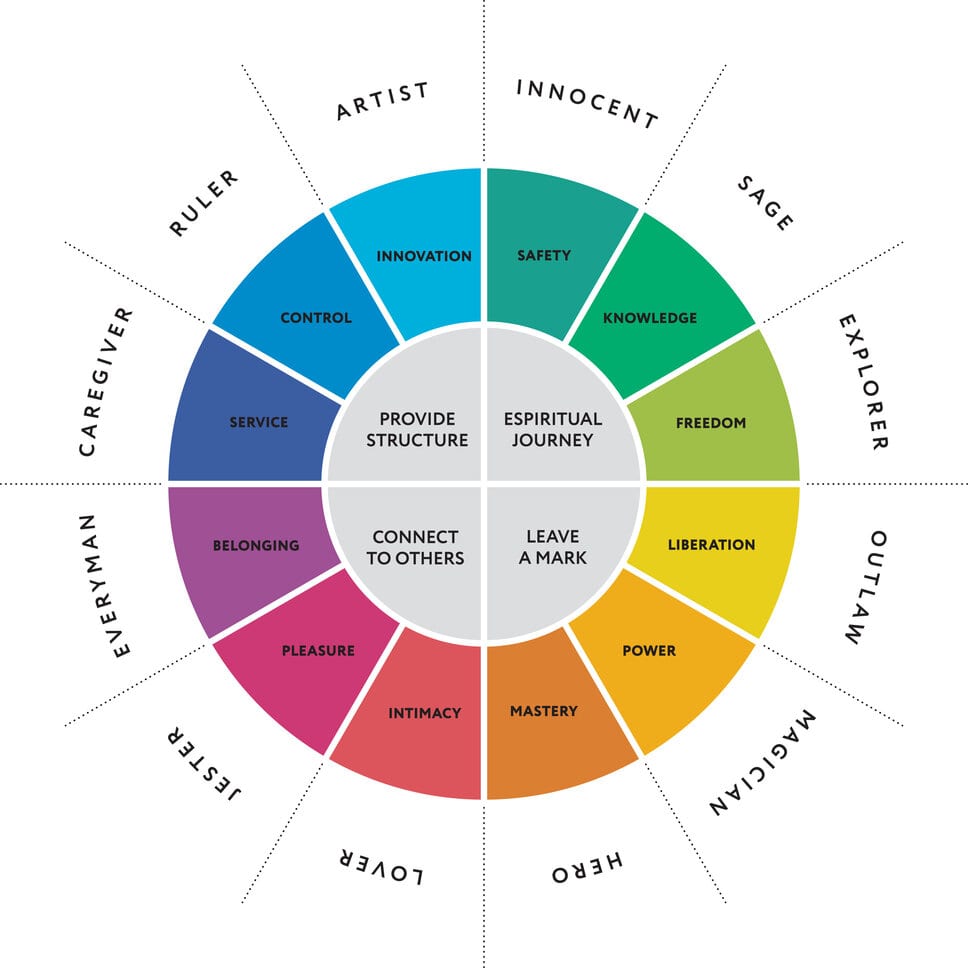

No matter how enticing a collaboration offer looks, be careful not to fall for the wrong personality. It’s tough dealing with collaborators that are either narcissistic or highly Machiavellian. You mustn’t feel like you are doing someone a favor or under some manipulative spell when asked to collaborate. But, on the other hand, you never want to box yourself in such a corner via your negligence of checking your collaborator’s personality.
The collaborators’ personalities matter a lot, but some people take that for granted and later struggle to sync with their collaborators, leading to business fatigue. You do not want to collaborate in building a great business empire with someone whose personality can bring you down a rough path. When you are looking for someone to collaborate with, make sure you both have a solid bond to help your vision flutter higher. At this point, your intuition has to effective.
#3. Greed Pit


Avoid collaborators who are only after making all the money and don’t care about the value the alliance will offer to customers. People who want to have it all but ignore the primary purpose of teamwork show they can do anything within the realms of possibility to gather all the monies for themselves. They would do whatever, good or bad, even if it means forfeiting that value that the customer is to receive. In their minds, lining their pockets always trumps protecting the common good.
“The richest of the rich is one who is not a prisoner to greed.” — Imam Ali.
The “money and me” collaborator is a red flag to watch out for in business. The reason is that a die-hard can push you off your business directly or indirectly due to greed. You won’t be able to do much about it but cry over spilled milk if that happens. Making a profit from the business alliance is all good and dandy, but when greed sets in, no one cares about values and goals but what’s in it for them. So, be careful of the greed pit.
#4. Loner Pit


“Yes, we’re collaborating, but I love to work alone,” umm, that is a red flag altogether. Avoid such collaborators and don’t fall into their pit because they break the team spirit that makes a collaboration yield good results. A good collaborator is not a loner—if they wanted to go solo, there is no need to be in a team. Instead, a good collaborator intends to work with you to ensure that the purpose for collaboration works out.
Yes, individually, you and your collaborator can do what’s needed with your skills and services to ensure the alliance works. But together, there needs to be teamwork that includes brainstorming together on strategies to grow, how to help each other’s business gain more awareness with the target audience, and more. Collaboration is all about helping each other grow and not focusing on your growth alone.
#5. Runner Pit


Don’t go into any form of collaboration without doing the paperwork. Avoid the runner or quitter pit where a collaborator always dodges to sign the contract or puts you on hold while the work is going on. After agreeing on the purpose for a value-driven collaboration, the next step is to put it in writing, agree on terms and conditions and do the necessary signings before a lawyer. Any partnership without a legal agreement could sometimes come off as a joke, especially for businesses or brands that want to go big. Avoid the runner pit and step into an earnest collaboration that can do you a lot of good.
#6. Fame Pit


Avoid the fame pit. Some people want to collaborate to use the opportunity to outshine everyone competitively. Some people want to be in the spotlight all the time. They only want to be the ones in the limelight. Should the spotlight shift to the other collaborator, they become envious and seek ways to circumvent the other collaborator to regain the attention. As you can see, this is a collaboration pitfall you should avoid.
Sometimes you can perceive it in the way they talk or act when working with a team. Associate with this set of people for some time and see how they handle their business and teamwork. That will give you a sense of their personality. You can now gauge them as stipulated in the personality pit category. For example, no collaboration is worth it where your partner sees you as a threat because of fame, irrespective of what you or they bring to the table.


Collaboration is great for every business one way or the other, but you must avoid some pitfalls. The first pit to prevent is the blind pit, where you get into collaboration without a sense of purpose. The second pit is the personality pit that shows if you’re compatible with the collaborator’s personality for business growth. Third, avoid the greed pit that involved the “money and me” extremists. Fourth, avoid the loner pit fellow who wants to collaborate and not collaborate at the same time. Fifth, eschew the runner pit, where the collaborator escapes signing contract papers. Finally, the sixth pit to avoid is the fame pit that makes it seem like you’re constantly in a competition with your collaborator.
“Alone we can do so little; together we can do so much.” — Helen Keller.
Have you, in your experience, ever fallen into any of the pits in this piece? If yes, which ones and how did you get into such a variation? Which of these pits have you avoided in collaboration? Share in the comment section.
Business
5 Strategies to Market a Controversial Product
Over the years, only a few companies have mastered the skill of marketing a controversial product that makes them stand out. So, what exactly did they do right that makes the masses embrace their controversial product? Please read all about it here.


The success or failure of any product in any business hinges on the foundation of marketing. You can have the best commodity ever; however, if you do not get that product out there so that people can be aware of it, then its future is doomed. On the other hand, whatever the product is—good or bad, controversial, or uncontroversial—if you tell its story right, then you can sell it. However, if you tell its story wrong, you best be sure that it will not sell, all things being equal.
What could we deem as controversial products or services? First, they could be products or services that are discriminatory against protected classes (e.g., race, gender, religion, etc.). Second, it could be products that encourage or support harmful or dangerous practices (e.g., hate-baiting, racial profiling, etc.). Third, potentially hazardous products (e.g., cigarettes, alcohol, etc.). Yes, some products shouldn’t be on the market, but they are. The companies producing or offering them are successful in marketing and selling them. What’s their trick? What’s their strategy?
“Great marketing goes beyond creativity; it interacts with the human needs.” — Anonymous.
Marketing a controversial product without full knowledge of what it entails is like putting your fingers in hot water to get burnt. You don’t have to feel the heat if you apply the right strategies to selling that controversial product to your target market. A particular approach is needed to succeed at getting a lot of “yesses” from your target market. Before you can win the heart of your target market, first do a lot of groundwork that helps you to come up with the right strategies.
5 Strategies to Market a Controversial Product
Taking to market and advertising a highly sought-after product is a challenge on its own. First, it requires effort, dedication, and a creative approach to creating a strategy that gets that product in front of the customers. Then, it requires innovation to get them to buy that product or even service, then as it may. However, it goes, these organizations are making it work, and we can learn a thing or two from them.


“Young people are a vulnerable group, susceptible to the precise marketing of e-cigarette companies, peer pressure, and curiosity. Young vape addicts need to be viewed as people with just that—an addiction.” — The Michigan Daily Editorial Board.
How much more a controversial product or service? These products or services may not receive a standing ovation from regulators or consumers alike? However, with the right story and strategy, these organizations can make it sell. Are you about to create a controversial product or service but don’t know how to go about making sales without your fingers getting burnt? Read on to gain some insights.
#1. Do Your Own Research (DYOR)


Let’s face it. It’s not easy marketing a controversial product. It’s ten times harder getting people to buy something they aren’t sure of, or that goes against their moral standards. But, if you are confident that your product has some value yet controversial, then don’t give up. Instead, get started by doing some market research.
Over the years, cigarette and alcohol companies have penetrated the market and had their share of mega-profits by being smart. How were they successful? They did their research, understood their target audience and what makes them tick. By so doing, they advertise their products to their niche while still warning them about the dangers of their product.


To go to war, you have got to be super prepared. You must get to know your audience thoroughly and the best ways to capture their attention and make them interested in buying from you. Not researching your target market increases the chance that the odds will not be in your favor. You do not want your target audience shooting down your product when it goes to market.
#2. Understand Your Limits


You have done market research on your industry and your target audience, but it does not stop there. You must now investigate whether specific rules and restrictions with marketing or selling your controversial product are within your target niche’s location. Every state or country has certain limitations with regards to running some specific kind of business. Find out what the regulations are and know your limit, and adhere to these restrictions.
The restrictions that you may encounter may not just apply to the traditional aspects of marketing your business. It could apply to the digital elements as well. For example, there are certain restrictions to the controversial marketing of products online, especially on Facebook. You can read about online marketing policies to know your limit when marketing your product or services on different digital platforms. Knowing your limits allows you to fine-tune your product marketing according to the on-ground policies of the medium where the marketing will take place.
#3. Educate


“Smokers are liable to die young,” but a lot of young people smoke, and cigarette companies keep cashing out. You see that slogan right there—may cigarette companies have it as a by-line in their advertising campaigns. It’s a creative marketing move that shows that—yes, we understand that smoking isn’t good, but we are giving you a choice to either smoke or don’t because your buying power is in your hands. This psychological trick tends to educate as well.
“Education is the most powerful weapon which you can use to change the world.” — Nelson Mandela.
Educating the masses on your controversial brand is another strategy that you can use in marketing or advertising. For example, the United States Surgeon General Warning, which is part of the Federal Cigarette Labeling and Advertising Act of 1965 (Public Law 89–92), requires cigarette companies to inscribe a warning on one side panel of each cigarette package. (NB. You can see this on the Center of Disease Control (CDC) website).


What an irony—rather than outrightly banning the pernicious and controvertible products, these cigarette companies instruct the masses of the dangers of their products but still allow the sales to go on. They, therefore, absolve themselves of the consequences of use by the end-users. However, they also profit from more sales due to the addictive nature of their products. The concept is a clear example of the role of education as a powerful and psychological strategy and tool in selling a controversial product.
You would be better off accepting that some people will be angry or offended that your business exists, and you can’t change that. However, you must also be careful not to cross certain boundaries when advertising. Else you may damage the image of your brand. Hence, as you educate the masses about your controversial product, you must stay abreast with the statutes of limitations that draw the lines that you should not cross. It will also be beneficial if you learn from the feedback coming from your consumers.


The best way to capture people’s attention is to educate them, especially on the values your product brings, so they are more open-minded. The approach you use in marketing your product is something you should put into consideration. Be less offensive when educating your target audience. Let them know why they need your product but also respect their opinions about your brand. Sometimes the views you get might help improve your product offering. When educating your target audience using different marketing platforms, do not forget to add value in the process.
“If people believe they share values with a company, they will stay loyal to the brand.” — Howard Schultz.
The famous condom brand, Durex, provides a case study of how to market controversial products. Durex wins over the heart of their target audience by the marketing content they put out there. They educate young people from abstinence but can’t control their urge to have sex, and as such, if they want to go ahead with sex, they should go about it safely with condoms. They also educate their target audience on the consequences of having unsafe sex and why they should always have condoms to protect their future. You can agree with me that educative content like this does not come off as offensive. Instead, the value these give helps is boosting more sales for the company.
#4. Get Creative
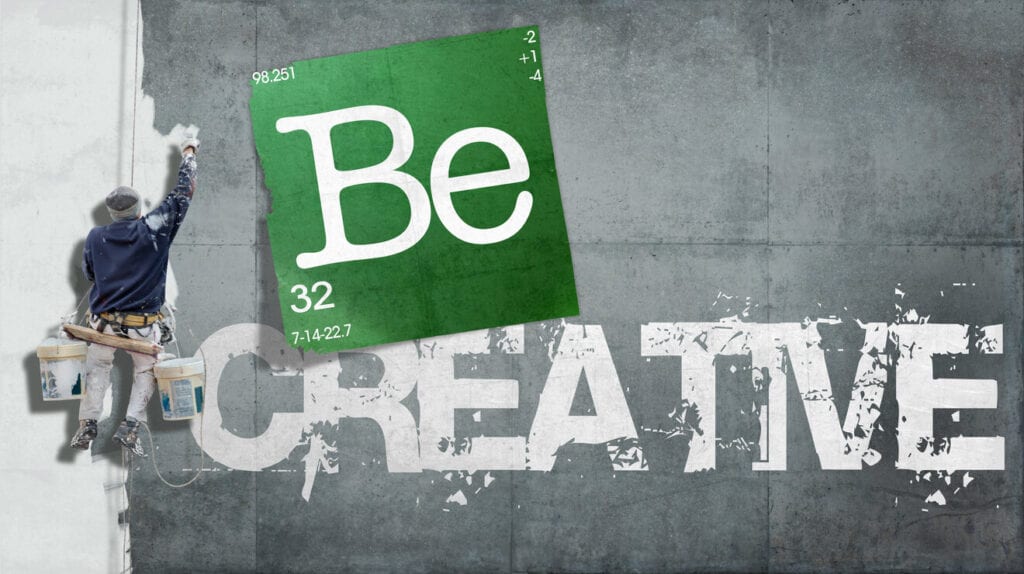

If you anticipate selling a controversial product, whatever the merchandise or service may be, you need to set the right tone. Adding humor to your content marketing alone does not cut it. There is more work to be done. One little statement or word could mess up your marketing and likely destroy your brand. So, instead, let your tone be more relaxing and playful so your target audience can be at ease when they come across your ad campaign.
“People spend money when and where they feel good.” — Walt Disney.
Another way to get creative is to market a lifestyle and not just the product. What fabulous lifestyle can people relate to when they come across your brand? Lifestyle marketing removes the barriers to selling controversial products. For your product to stick out, you need to have robust messaging and take control of your brand. Be sure to have a compelling story to back up your brand.


When marketing, make your product more appealing because if you offend everyone with your marketing copies, there is no way you can make profits. In being appealing, ensure your visuals are entertaining and leave a lasting impression on the minds of your target audience. That will put you on the right track to successfully selling your controversial product or service.
#5. Go the Extra Mile


Don’t just market; build relationships that will result in growing a good number of loyal customers. Get in touch with customers and appreciate every referral gotten. Don’t just market your product like every other business or brand out there. Build relationships and give every customer a unique experience with your brand that eventually builds trust. Your satisfied customers will eventually turn into loyal brand evangelists no matter how controversial your product is. When sales start buzzing in, do not kill the value you’ve been offering: more value, more growth.
Go the extra mile in your attempt to market your product, brand, or service. When you are building a brand, go the extra mile to research and strategize. Don’t be satisfied with the status quo. Don’t settle for the standard ways of marketing and advertising your product, service, or brand. Be creative in your process. Develop S.M.A.R.T. (i.e., Specific, Measurable, Achievable, Realistic, and Timely) marketing plans to develop a selling strategy for your product. Go the extra mile-don’t give up.


So far, we have seen several strategies that can help us market a controversial product. First, you must Do Your Own Research (DYOR). It would be best if you did your due diligence in doing thorough market research for your product. Second, understand your limits. It will save you valuable time in your process. Third, educate your customers about your controversial product, and don’t forget to learn about the statutes of limitation concerning your controversial product. Fourth, be creative with your marketing. Don’t take a dull approach. Fifth, don’t settle for the status quo—go the extra mile.
“It’s not what you sell that matters as much as how you sell it!” — Brian Halligan, CEO & Co-Founder, HubSpot.
Marketing a controversial product can be easy peasy if you’re patient enough to take the proper steps. Taking the right steps here means doing your market research, understanding your limits, educating your target audience, getting creative, and going the extra mile. The market will be tough on your product or service at first, but it goes smoothly within a short period if you do it right.
Business
15 Celebrity Business Tycoons You Should Know
Many celebrities are venturing into businesses using their fame and fortune, and some are already thriving in it. Their business success teaches us that we should never put all our eggs in one basket—it always pays to innovate and diversify our investment portfolio. Please read all about it!


Many celebrities are venturing into businesses using their fame and fortune, and some are already thriving in it. Gone are the days when people put all their eggs in one basket. It is all about the diversification of portfolios and ensuring that you secure the nest egg of your legacy. Even celebrities are not immune to this bug of having a diversified safety net. That is why many celebrities are delving into sundry businesses.
“Businesses do not become successful because of how popular a celebrity is but how it’s well executed.” — Nelly Essien.
Celebrity tycoons come from various industries and backgrounds such as sports, the music industry, the acting scene, reality shows, etc. The moral of this article is to show that an attained celebrity status could be a means to an end—an end shown in the diversification of effort and the portfolio of these individuals via business. In this piece, I will talk about a few global celebrities doing so well in business to get you inspired. Let’s go:
#1. Magic Johnson


Earvin “Magic” Johnson is the Chairman and Chief Executive Officer of Magic Johnson Enterprises. The NBA legend hall of fame personality founded his enterprise and investment conglomerate in 1987. His organization’s mission is to provide high-quality products and services that focus primarily on ethnically diverse and underserved urban communities. His company has had many deals with mega-companies, and in 2010, his company was worth over $100 million. Per reports, his conglomerate has a net worth of $1 billion. Then, he became the Co-Owner of LA Dodgers, where he has a 2.3% stake. Today, the LA Dodgers’ worth is at $3.4 billion. He has a $600 Million personal net worth at the time of this writing.
#2. Rihanna


Robyn “Rihanna” Fenty is a Barbadian musician, actress, fashion designer, and businesswoman. She is an entrepreneur and the Fenty clothing line Founder. According to Forbes, her net worth at the time of this writing sits at $600 million. Rhianna has become the most talked-about celebrity business tycoon. In 2018, the Fenty Beauty makeup line made sales of an estimated $570 million. She also launched Savage X Fenty, which is a lingerie line that has been booming in sales to date. PageSixStyle reports that Rihanna’s Savage X Fenty lingerie brand is now worth $1 billion.
#3. Bono


Paul David Hewson, better known by his stage appellation, Bono, is a renowned Irish singer-songwriter, activist, philanthropist, venture capitalist, businessman, and actor. Bono is one of the Co-Founders of Elevation Partners, a private equity firm with the sole aim of investing in Technology and New Media. Elevation Partners had gained $1.4 billion alone from investing in Facebook, and according to Bloomberg, the group has invested $1.76 billion with a 12% net rate of return. He is also Co-Founders at the sister humanitarian organizations ONE and [RED]. Bono’s Net Worth at the time of this writing sits at about $700 Million.
#4. Sofía Vergara


Sofía Margarita Vergara Vergara is a Colombian-American movie star, television producer, presenter, businesswoman, and model. Sofia is an intentional businesswoman who has used her fame to grow a business empire. In 2016, she confounded an underwear company, EBY (“Empowered By You”), that delivers undies to women monthly or quarterly depending on customer’s preferences. She uses 10% of the net sales to support the Seven Bar Foundation in alleviating poverty in undeserving places by providing capital for women to run small businesses. Sofía Vergara’s Net Worth at the time of this writing sits at about $180 Million. Her drive and go-getting personality make her an endearing celebrity tycoon that you should know.
#5. George Clooney


George Timothy Clooney is a renowned American actor, movie director, producer, screenwriter, businessman, and humanitarian. George once said that “You have only a short period of time in your life to make a mark.” We can see him living up to his words as he makes a mark in various industries, especially in the business world. He and Randy Gerber founded Casamigos Tequila. In 2013, they launched the brand after successfully running distilling tests to perfect the drink. This tequila drink became a success in the food and drink industry that it has won gold medals. George Clooney’s Net Worth at the time of this writing currently sits at $500 Million. He is a celebrity business tycoon that you should know.
#6. Simon Cowell


Simon Cowell is the Founder of the famous competition series called X factor. Then, in collaboration with Sony music entertainment, the “American Got Talent” franchise was born. Since then, Simon has been on a steady flow of expansion and wins. Simon Cowell’s Net Worth at the time of this writing sits at $600 Million.
#7. Jessica Alba


Jessica Alba started “The Honest Company” in 2012. She found a need for households to have non-toxic and safe baby products, and she founded her company based on that need to deal transparently in selling baby products. According to Forbes, the Honest Company valuation is at $1 billion. Jessica Alba’s Net Worth sits at about $200 million.
#8. Robert De Niro


Robert is a celebrity entrepreneur who is making a lot of money in the food industry. In partnership with Chef Nobu Matsuhisa, he founded Nobu, a Japanese restaurant chain. Nobu has grown so big with many branches worldwide in over forty locations alongside establishing twelve hotels. Apart from Nobu, Robert also has stakes in several other restaurants and co-founded Tribeca Enterprises, a media outfit, and the host of the Tribeca Film Festival. Robert De Niro’s Net Worth at the time of this writing sits at $500 million.
#9. Jessica Simpson


Jessica Ann Johnson, popularly known as just Jessica Simpson, is a renowned American singer, actress, fashion designer, businesswoman, and author. In 2005, Jessica Simpson launched her fashion collection called the Jessica Simpson Collection that made her uber-rich. To date, the brand made a whopping $1billion in retail sales annually selling home decor, clothes and shoes. Jessica Simpson’s Net Worth at the time of this writing sits at $200 million.
#10. Kevin Costner


Kevin Michael Costner is an American movie star, filmmaker, and businessman. The visionary celebrity entrepreneur founded Ocean Therapy Solutions (OTS), a company specializing in developing centrifugal oil-water separators that he acquired from the United States Government in 1995 for $24 million. According to New York Times, an OTS oil separator can separate 200 gallons of water from oil per minute. He also owns a social attraction called Tatanka in Deadwood, South Dakota, and also a casino. Kevin Costner’s Net Worth at the time of this writing sits at $250 million. He also once said that “Failure doesn’t kill you. It increases your desire to make something happen.” In business, that is a mindset that you want to have.
#11. Gwyneth Paltrow


Gwyneth Kate Paltrow is an American movie star, model, writer, entrepreneur, businesswoman, and author. She is the Founder of Goop, a wellness and lifestyle brand that started as a weekly newsletter brand in 2008. It grew to become a vast eCommerce platform for home products, wellness, beauty, and fashion. Worth reports that Goop is worth about $250 million in 2019 and has since been on steady growth. Gwyneth Paltrow’s Net Worth at the time of this writing is $150 million.
#12. Kylie Jenner


According to Forbes, Kylie Jenner is one of the youngest celebrity entrepreneurs that made it to the billion dollars net worth list. At the time of this writing, Kylie Jenner’s Net Worth is now at $700 million. So, what got her to this level of wealth? Her cosmetics line, Kylie Cosmetics, is the answer. She started her cosmetic business at the age of twenty-one. Her brand made her the youngest self-made billionaire who harnessed the power of social media to pull in a lot of sales. However, as stated above, she is no longer on this list. After the launch in 2016, Kylie Cosmetics got $420 million in sales, and in 2019, she launched another business called Kylie Skin line. We are excited to see what lies ahead in this celebrity business tycoon’s future.
#13. Kim Kardashian


Kimberly Noel Kardashian West is a renowned celebrity business mogul with several businesses under her belt. She is an entrepreneur, American Media Personality, Socialite, Model, Businesswoman, TV Producer, and Actress. She launched KKW Beauty in 2017, which sold out in under 3 hours. According to Forbes, KKW generated $100 million in 2018. Kim also launched another business, a shapewear brand called Skims, in 2019 that recorded a high number of orders and massive sales minutes after its full launch. So, according to Celebrity Net Worth and Forbes, it is official, Kim Kardashian’s Net Worth at the time of this writing is $1 billion. Talk about a savvy businesswoman who is packing the Benjamins.
#14. Ashton Kutcher


Christopher Ashton Kutcher is a renowned American actor, model, producer, entrepreneur, investor, and businessman. Ashton Kutcher, entertainment manager Guy Oseary, and billionaire investor Ron Burkle founded A-Grade Investments in 2010. The purpose of establishing this company is to put his money into disruptive tech businesses that solve a problem. He has invested in Airbnb, Uber, SoundCloud, Spotify, and Shazam. According to TechTimes, he has over $100 million worth of investments. Ashton Kutcher’s Net Worth at the time of this writing sits at $200 million.
#15. Kate Hudson


Kate Garry Hudson is a renowned American actress, producer, author, businesswoman, and fashion entrepreneur. In 2013, she co-founded the fitness wear called Fabletics with Adam Goldenberg and Don Ressler. The brand started without an outlet but now owns over twenty-five retail stores with a plan to open more outlets. According to Forbes, Fabletics’ annual revenue is $300 million. In 2019, Kate also launched another business, HappyxNature, which is an affordable eco-friendly fashion brand. Kate Hudson’s Net Worth at the time of this writing sits at $80 million.
“There is no magic to achievement. It’s really about hard work choices and persistence.” — Michelle Obama (Former First Lady of the United States).
Some celebrities have shown us that they can be great at running a successful business and not only be known for their fame on the screen. The celebrity entrepreneurs we admire, in no particular order—Magic Johnson, Rihanna, Bono, Sofia Vergara, George Clooney, Simon Cowell, Jessica Alba, Robert De Niro, Jessica Simpson, Kevin Costner, Gwyneth Paltrow, Kylie Jenner, Kim Kardashian, Aston Kutcher, and Kate Hudson. Is there another celebrity entrepreneur you genuinely admire that has done well for themselves in business? Let us know in the comment section.
Business
5 Types of Customers & How to Sell Profitably to them
In the absence of customers, there is no business. They are the lifeblood of all companies. Organizations will cease to exist in the absence of customers. Hence, companies must understand their customer base and what makes them tick. Please read all about it.


Every business is out to make a profit, and that can only happen with excellent people management. Without customers, you can’t sell—simple. Customers are what makes businesses thrive and rise. They are the lifeblood of all companies. Organizations will cease to exist in the absence of customers. Hence, companies must understand their customer base and what makes them tick. The core consideration that matters rests on understanding how to handle different types of customers so you can keep selling and making profits. In this piece, we will go through some customer personality journeys to ensure that you keep making cash steadily as a business.
My Experience as a Customer


First, to manage and retain different types of customers, your product or service must be good. You don’t expect to appeal to customers if you don’t have a good product or service. Second, your marketing strategies must be unique. It does not pay if you have a good product or service if people don’t know about it. Hence, you need to spread the news; you need to market your product or service to take the flight of success. Thirdly, and most of all, your customer service must be top-notch. Hence, treat your customers right, and they will keep coming back again and again. These three factors are crucial in the building and retention of a customer base.
Talking of customer service, I have visited offices that treated me like a Queen when transacting with them. However, I have also been to offices where I am rudely spoken to like I don’t matter. I remembered one time I visited a bank for the first time. I was so exhausted, and I just needed a warm smile, beautiful reception, and easy transactions so I can go home for lunch. Unfortunately for me, on that day, the abysmal customer service started from the bank entrance. The security guards spoke rudely to me and declined to point out the bank’s access to me.


The day’s customer service demise did not end with the security guards. Secondly, getting to the counter, the banker was also rude in telling me how to present the cash I want to use. Then, thirdly, while leaving the bank, another security guard in charge of the exit door rudely asked me to handle the door like someone who has eaten. At this point, I became furious, and I caused a scene. Unfortunately, the head of security was not polite to handle the matter and made matters worse. Finally, they capped off their rude customer service by asking me to leave the bank, which I gladly did. However, that single event ruined my entire day, and I have hated that bank since then. Guess what, though, they lost my business.
“Quality in a service or product is not what you put into it. It is what the customer gets out of it.” — Peter Drucker.
So, imagine that the hands you hired to grow your business are the ones chasing your customers away, or maybe you are not good with relating with different customers. Also, imagine how much money you are losing by directly or indirectly chasing customers away. Hence, you must pay close attention to your customer base. How you treat them matters in retaining or chasing them away from your brand. Peter Drucker makes an important note concerning quality in a service or product. He establishes that the “Quality in a service or product is not what you put into it. It is what the customer gets out of it.” The point he makes is critical to your business’s growth or implosion. Therefore, understanding your customers is crucial to your business’s success and sustainability.
5 Types of Customers & How to Sell Profitably to them


Customers are the winds that make the turbines of business spin. To adequately take care of customers’ needs, first, you must know the different kinds of customers out there that patronize businesses. Second, you must understand how they think and what makes them tick. Third, you must understand what influences their shopping habits. Only then can you cater to their needs effectively. Below are the different types of customers and the best way to relate with them.
#1. Window Shoppers or Scouters


Window Shoppers don’t want to buy your goods or services. However, they are apt at engaging you in a dialogue to know how much your products or services costs. Some may even compare your prices to that of your competitors, and then they are off. The funny thing is that they can be annoying sometimes as they seem to ask the most questions. Sometimes, this could steal your time from actually helping other paying customers at your establishment.
One time I was looking for the best price for a particular neckless in the market and one of the salesgirls in charge of the jewelry shop said she was not going to answer any question if I was not ready to buy. She established that she would engage with me only if I showed proof that I wanted to purchase an item and not window shop. “Wow!” I was shocked as you right now. It could be that she was frustrated with not many serious buyers coming into the shop, but her response could have chased a high-paying customer off. Sadly, this happens even in online stores.


How to sell to window shoppers: If you own a physical store, ensure that it looks attractive and that your customer service is compelling enough to make a window shopper come back. If your business is primarily online, ensure that you have a good-looking user-friendly website, attractive copies, and actionable newsletter signups that can compel them to shop from you in the nearest future.
#2. Discount Enthusiasts or Discount Shoppers


Discount Enthusiasts or Discount Shoppers are always on the lookout for promotions or product/service discounts. In the United States, they are often the Coupon Clippers who are always out to strike a deal whenever they can. However, this lot can also be bargain hunters who always want to purchase at the right price, and some can even buy in bulk because they want to save some money. An excellent example of discount shopping in the United States is the Black Friday Shopping that goes on the Friday after Thanksgiving in the United States. Black Friday Sales is a Discount Shoppers Heaven.
How to sell to Discount Enthusiasts/Shoppers: People love deals. No one wants to buy from a brand that doesn’t offer deals every once in a while. As a business, always ensure you have exclusive sales, and even if you are doing discounts, do it smartly, so you do not run at a loss. For instance, you can offer free shipping or even a freebie to go with the purchase. Selling smartly to this set of buyers helps you to keep selling.
#3. Buyers


Buyers are a set of people who are ready consumers, and they do not mess around. They are on the lookout for immediate solutions to their problems, so they are prepared to spend and satiate their needs without hesitation. But, unfortunately, poor customer service can ruin your brand where the buyer is concerned because they will likely take to the street with it on Twitter and other social media platforms.
“If you build a great experience, customers tell each other about that. Word of mouth is very powerful.” — Jeff Bezos.
How to sell to Buyers: First, you need to make sure that you take buyers on a unique customer journey. Second, make buying a seamless process as everyone has a busy life and schedule. Third, beware of very long copies or unnecessary clicks that will make them lose interest in your offering. Fourth, allow them to buy and convert easily to become your loyal customers.
#4. Well-Informed Buyers


This set of buyers will not purchase until they are sure that your product is genuine. They sure will do their homework before they commit to buying your product or your service. I am an excellent example of a well-informed buyer because I love to research before saying “Yes,” to a product or service offering. I will check for reviews, and when I see that there are many bad reviews on your product or service, it’s a huge turn-off. Why it’s true that many people can generally be haters of a brand, having 70% bad reviews and 30% good reviews shows a problem somewhere with your brand.
How to sell to Well-Informed Buyers: You must ensure that you’re honest with what you say your product or service can do. Be rest assured that the well-informed buyers will research to find out if what you say holds veracity. The market out there is crowded; hence you must make sure that you are on top of the game. Have all the data that this set of people needs and write a lot about all the features you sell and how it can genuinely help them. Do not forget to include testimonials, too—this will make you sell faster and grow your profits.
#5. Impulse Buyers


Impulse buyers are not loyal buyers and do not need any convincing to make a purchase. These buyers do not plan before they purchase a product or service. Buying for them is done for materialistic reasons. Their buying behavior spawns from emotional triggers. This set of people can buy things on the go, but you can smartly make some money off them. They are also called impulse purchasers or compulsive buyers.
How to sell to Impulse Buyers: First, Make buying easy for them; else, they will leave and never look back. Second, you can also offer them exclusive deals to turn them into loyal customers in the future. Thirdly, use neuromarketing techniques that appeal to their emotional triggers to capture the attention of the compulsive shopper.
“There is only one boss. The customer. And he can fire everybody in the company from the chairman on down, simply by spending his money somewhere else.” — Sam Walton.
What are you selling? Ensure you are winning over every type of customer, as stated above. Start by understanding your customers. In this piece, we saw five different kinds of shoppers—Window Shoppers and Scouters, Discount Enthusiasts or Discount Shoppers, Buyers, Well-Informed Buyers, and Impulse Buyers. When you understand your customer, only then can you keep selling to them and making more profits. The market can be rough, but getting people to buy and making profits should be easy. Also, remember to make giving top-notch customer service your standard.
Business
10 Things Africa Must Do to Become A Global Investment Hub
Africa is a goldmine of opportunities. Africa is a rocket ready to launch, ready to blast off into the meteoric heights of the business cosmos! Africa is locked and loaded to become the most incredible investment hub on the planet. For this to be, Africa as a continent has a role to play. Find out how. Please read all about it!


Africa is a goldmine of opportunities. It is a continent replete with so many potentials that it would make the mind of the rhetoric sage shiver and quake to the cold tremors of wonder. Africa must realize the wealth of its resources-human and natural resources. Africa can transform itself. The continent indeed holds lots of investment opportunities to the world to push for its economies’ growth and development. Africa must eliminate the barriers preventing her from becoming the most significant investment hub that the world has ever seen.
“Africa is the fastest-growing economic region in the world. This is the right place to invest.” — Aliko Dangote.
According to the World Bank, Africa “has become the second most attractive investment destination in the world.” The continent is trailing behind North America. Investors are scavenging the countries of Africa for the next big thing beyond the established markets of South Africa, Nigeria, and Kenya. Changing the African narrative will attract foreign investments, which will help close the many gaps that the continent faces.


Africa has its strengths, weaknesses, opportunities, and threats. Africa must use its powers to eliminate its shortcomings. Africa must learn to leverage its opportunities to gain an advantage and grow. Africa must learn to eliminate its limiting threats before it becomes unsalvageable. Africa must learn to eliminate the many factors that act as drawbacks to becoming the world’s number one investment hub. These challenges are some of the key reasons why many investors reconsider the decision to come to Africa.
Thanks to the advent of technology and the World Wide Web, the world has become a global village. African leaders must break away from a myopic mentality and start thinking of making their nations attractive to outside investors. The era of self-serving thinking needs to become a thing of the past quickly. Citizens of all countries of Africa must become tired of voting corrupt leadership into positions of power. The quicker Africa transforms its thinking, the better, which is what this piece is here for, all things being equal.
10 Things Africa Must Do to Become A Global Investment Hub
Africa is locked and loaded to become the most incredible investment hub on the planet. Africa is a rocket ready to launch, ready to blast off into the meteoric heights of the business cosmos! If the fifty-four nations that make up Africa have a re-think and start priming the booster engines of Africa, the sky will not be the limit of Africa; the cosmos will be a steppingstone for its more incredible ascent! Here are some things the African continent requires to achieve even more progress to become the world’s most significant investment hub.
#1. Increased Collaborative Strategies


Countries in the African continent need to start working together more in various sectors such as Science and Technology, Education, Health, Security and Intelligence, Trade and Commerce, Tourism, Environment, Arts and Culture, etc. Collaboration among African nations is crucial if Africa is to become a global investment hub. There are only a few collaborative strategies for project development in Africa. Via collaboration, the countries that make up the African collective can start helping each other out, growing, and profiting equitably in the process. African nations must stop working in silos and support each other jointly. African governments must become collaborative sprockets to keep the continent’s engine running in the bulb of positive intelligible ideation. Satisfying this need for partnership between sectors as a continent will make the continent better equipped to deal with the rest of the world.
#2. Provide Fund for Infrastructural Development


There is a lack of funds for the development of infrastructure. A study establishes that there is an infrastructural gap in sub-Saharan Africa. There is a need for a yearly sum of $93 billion in infrastructural financing over the next decade in other to fill this gap.1 Shortage of funds means that governments cannot invest in new infrastructural projects and find it challenging to maintain existing ones. Africa needed to be way past this yesterday, and this variation should not be so in the community of nations that make up the continent of Africa.
African governments need to set their priorities straight—individually as independent nations and collectively as strategic and collaborative nations that make up the continent. There is a need for countries in Africa to concentrate on developing projects to solve the infrastructural gap problem while simultaneously providing employment opportunities to its teeming human capital. One possible way to address the infrastructural problem is Public-Private partnerships in various sectors on a scale of priority.
#3. Implementation of Good Policies


Continents become great on the foundations of sound policies enacted by its constituting countries by good leaders who want to work for the people under the auspices of righteous governance. Failure to act and implement reasonable policies under the watchful leadership lens of incorruptible control by member countries of a continent will lead to a lack of development and decadence of the continent as a whole. There should be public policies that will enable progress and systems to eliminate structural weakness and risk of marginalization.
#4. Need for Good Governance


Africa has great minds that can provide solutions to many of its problems. Unfortunately, Africa seldom feels the full effect of these policies because of the adverse impact of corrupt systems, governance, and leadership. That is the bane of Africa’s undoing, the Achille’s heel of her non-progress, growth, and slow development. The sooner the scales fall off the eyes of the different nation’s leaders and their populace, the better. The government, for the sake of proper accountability, should tackle corruption and inefficiency. The longer this gap remains, the longer the continent will remain under the dark shrouds of slow-dom.
There should be no careless use and misappropriation of government funds, and there should be a reform of the civil service across the continent to enhance efficiency. Transparency must become Africa’s mantra among all its nations. Until Africa becomes fed up with the plague of corruption, it will remain the impedance that will stall investors from entering the continent in their droves. If Africa does not embrace transparency, how can investors trust that their venture will be viable and yield any value? Becoming a global investment hub will be far-reaching so far as this variance remains at the forefront of affairs. Good governance is not an option; it is a must and the only option towards a continental shift towards change at a grand scale, ceteris paribus.
#5. Need for Skilled Labor Force


In many African countries, most persons in the work-age group are either unemployed or underemployed. This population, mainly consisting of youths, is significant. According to the United Nations statistics, about 226 million youths (15-24 years of age) lived in Africa in 2015, which must be up by now. However, that number is approximately 69% of the total U.S. Population, which sits at 328.2 Million. Because this makes up a large segment of Africa’s population, it is clear that this is a severe problem. There is the need to provide them with the necessary skills, support, and education by making it affordable and easily accessible. There is also the need to investigate vocational training targeting the corporate and private sectors.
#6. Conducive Investment Conditions


Africa needs to create an enabling environment that will make the funding of ventures conducive to outside investors. There needs to be the elimination of all trade barriers. Such barriers could be reduced transport, high energy costs, inadequate security, good access channels (e.g., roads, rail, air, waterways, etc.), poor waste management processes, inadequate governance policies, leadership corruption, inhumane treatment of the human capital, poor ethics and lawlessness, poor communication access, inadequate healthcare, etc. The list could go on ad infinitum. The push for a more flexible labor market and good competition policies will make Africa an attractive global investment hub. All these barriers need expunging because global supply chains require transparency, accountability, and reliability.
#7. Promote Growth Through Agribusiness


Africa needs to concentrate on boosting agricultural productivity within its constituting nations, especially within rural areas, to increase investment within the continent. Africa could quickly become the food basket of the world. This strategy will promote growth, expansion and will contribute to economic returns. Despite the sector being quite viable, it is still not at its good apex spot. African nations should support their rural farmers to improve their conditions and processes. They should also empower them to go into large-scale mechanized farming for greater efficiency and productivity.
#8. Ensure Economic Security and Reform Financial Sectors


Africa needs to ensure the proper framework to ensure economic security. They also need to reform the financial sectors to create the right enabling environment for Multi-National Entities (MNEs) to invest. Carrying out these actions across Africa will reduce uncertainty plaguing economic decision-making in some regions of the continent. When these happen, Africa must protect and secure the golden-egg-dividend of the reforms that ensue. Much needs to be done, especially in Africa, to strengthen its financial systems as most of them are not at optimum regarding their management. These must happen to boost the investment confidence of outside investors to the continent.
#9. Better Security Measures


Some African countries experience civil unrest, tribal and religious war, genocide, terrorism, abduction cases, and more. All of these are security issues, and more make these regions unsafe for investors. Potential investors are reluctant to consider those regions experiencing these security issues. Governments of these regions should ensure better security measures to address these issues. They must become aggressive to tackle these variations and eliminate them pronto. These nations can do so via robust security reforms, retrain and rebrand law enforcement, invest in their militaries, and adopt a zero-tolerance attitude towards domestic and internationally bred terrorism, to mention but a few. It will not be a small measure to curb these matters. However, as the ancient Chinese Proverb states, “A journey of a thousand miles begins with a single step.” Africa must start taking steps today.
#10. A Culture of Innovation


The most prosperous and developed countries are usually those that, through true innovation, have been able to provide value to the world. Disruptive innovation is one of the most significant catalysts to business growth. In the Oaekpost article titled, “10 Facts About the Role of Innovation in Business Growth,” you will see how businesses deploy this strategy to become very profitable. As these businesses profit, the economy of the nations where they are also improving. They provide other countries of the world with valuable goods and services that transform lives en masse.
Africa is the dumping ground of the developed nations where innovation is moving at full force. When companies innovate and create new products or services, they always test out their products in Africa. Africa is a dumping ground because the leaders that be and the populace alike allow it. Africa needs to break the cycle of being the dumping ground of the world. Africa needs to innovate and become self-sufficient, thereby reducing the need for imports. Doing this will make its economies more robust and more competitive globally.


Africa can become the investment magnet hub of the world. Before this can happen, Africa must play its part in the process of transforming itself. The listicle and piece are not exhaustive. However, suppose the constituting nations that make up the African continent start working on eliminating these barriers. In that case, it will be a step in the right direction of transforming Africa into a grand investment hub. An excellent first step for the wise constituting nations of Africa is to contemplate this piece on Oaekpost. A perfect next step is to consult with its writer for broader recommendations and bring it to the discussion table in all Government Houses across Africa and start implementing its recommendations and more one after the other.
“Africa is open for business. The days of aid are over. We are now on a highway to boosting Africa’s prosperity, through greater trade and investments ‘without borders’ among nations.” — Akinwumi Adesina.
Africa has a role to play for it to become a global investment hub. As we have seen, first, there must increase collaborative strategies among African nations. Second, a plan to fund infrastructural development across Africa must take center stage fast. Third, embracing a rational policy implementation strategy is requisite. Fourth, the assumption of top-notch governance is pivotal. Fifth, a well-trained workforce is fundamental. Sixth, investment conditions must be conducive. Seventh, growth can happen via a focus on Agribusiness. Eighth, economic security and financial reforms are a must. Ninth, stealth, steady, and sure security measure should be seamless across Africa. Tenth, Africa must embrace innovation. For Africa to become, the onus lies on her citizenry to achieve the strategies mentioned above and more.
References
- Gutman, J., Sy, A., & Chattopadhyay, S. (2015). Financing African infrastructure: Can the world deliver. Retrieved from https://www.brookings.edu/wp-content/uploads/2016/07/AGIFinancingAfricanInfrastructure_FinalWebv2.pdf
Business
5 Lies Top Business Gurus Have Told You
It is easy to believe everything business gurus tell you because they have built businesses that the world sees as successful. However, the truth is that it is not always so. Learn more here!


It is easy to believe everything business gurus tell you because they have built businesses that the world sees as successful. Who wouldn’t want to learn from successful people to become successful? We believe that entrepreneurs who have built wealth over time have all the answers to our becoming like them, and as such, we see them as thought leaders in the business world, which motivates us to want to become like them even more.
“…there are other top business gurus we look up to that won’t tell us the truth about the business world.” — Nelly Essien.
While there are great businessmen whose experiences have given them a depth of understanding about how things work, unfortunately, there are other top business gurus we look up to that won’t tell us the truth about the business world. It’s either the truth is being withheld, or these business gurus haven’t evolved in their depth of mind, so they operate with luck. In this piece, I will share some of the common lies that business gurus keep telling us. Separating the lies from the truth will help us achieve faster results and grow our everyday business dealings. Let’s go:
#1. Work Harder


For many years, “work harder” has been like a song that keeps ringing in our ears. Everyone keeps saying, work harder, work harder! That is the first thing every business guru will tell you when giving you some business advice. Working hard works but with something extra. What works better is “working smart.” Many business gurus are working smart, but they won’t reveal that business is all about how smart you run it. You can be working hard and working amiss, and that alone can become a prolonged growth to success.
“Working smart doesn’t mean working less. It means working hard on what truly matters.” — Gymaholic.
If working hard was a great way to become a successful entrepreneur, every business person on the planet will be successful. So instead of being stuck with the belief of working hard, why not switch your mindset to working smart? Sell the right product or service, strategically position yourself for sales, make smart moves to build a loyal community of customers in a very crowded market, meet the right partners or investors, and so on. Don’t just set up a business and run it like how the world has designed it to be, especially baptizing it in your sweats. Change the game by making smart moves, and it will amaze you how you don’t have to sweat to climb the ladder of achievements.
#2. Stick to How You Do It


Some top business gurus have told you not to follow the normal flow process on how a business should operate. For example, if you own a restaurant, run it like every other restaurant but ensure that your meals taste better. So, you stick to the normal process of running a restaurant, but you’re competing with other restaurants in the sense that your food tastes better. It’s a big lie to stick to a particular business’s normal flow process when you should challenge the process and do something different. Your restaurant should be known for its meals and changing the entire way people view restaurants. Don’t be too firm about sticking to how you have always done it. Be flexible and innovative. Always leave room for change.
#3. Reading Books Does Not Get You Anywhere


Many people believe that books are for nerds, and bookworms are the least successful people in life. Some business gurus will tell you that reading books will steal the time you need to be hustling fiercely, and you can only learn on the go, which means experiences alone in your business can teach you. Yes, experiences can teach you, no doubt. However, reading books helps you escape horrible experiences you may have in business through the knowledge you acquire from your studies. Today, many great businesspeople had a reading lifestyle that helped them build the mega empires we admire today. Get yourself some books and start to develop a reading culture. It shapes your mind, helps you evolve in your thought process, and it is an investment for your future.
#4. You Can Do It All By Yourself


Some top business gurus have shared their success stories with us which is a story of grass to grace in most cases. Most of the time, these stories mentioned that they had no help and did it all by themselves, which means they filled up all the job positions in their businesses and handled each of them effectively. The statement, “No man is an island,” defeats this lie because no matter how we tell ourselves that we are doing it alone, the truth is that we always have help one way or the other, no matter how little it is.
“Great things in business are never done by one person; they’re done by a team of people.” — Steve Jobs.
I understand what it means to start small where you’re your marketer, customer care representative, accountant, and more. However, the fact is that you’ll break down and become less productive at a point, and as such, your business suffers. Even if your business is as small as selling fashion accessories, you’ll need someone to do all the deliveries to your customers. If you try to do it all like Atlas carrying the world, you’ll get depressed and probably dump the idea of being an entrepreneur.
As earlier stated, work smart, which means that you can start by building a small team with highly effective individuals without breaking the bank. You can as well choose to partner with another small business to speed things up.
#5. Entrepreneurship is the Fastest Way to Becoming Rich


Like most motivational speakers, some business gurus will tell you to quit your job and head towards the road, leading to wealth. Today, many young people want to become entrepreneurs because they want to amass wealth and not make people’s lives better. So, when things do not go as they planned, they become depressed and sometimes even suicidal. This false belief that looks like a get-rich-quick scheme has made many people make wrong decisions that have cost them their jobs or even made them come up as cheap in the market when desperately selling products or services that don’t add value to the market. Entrepreneurship is a journey on its own. If you keep selling value genuinely, in no time, you’ll build a great business empire.


Not all top business gurus propound these lies. So, what lessons do we walk away with from this piece? First, work hard; however, change the game by making smart moves. Second, don’t be too firm about sticking to how you have always done it. Be flexible and innovative. Always leave room for change. Third, books will shape your mind—do yourself a favor and start reading today. Fourth, you may need the help of others—don’t be an and Atlas and get crushed by the world of your problems. Never shy away from asking. Finally, entrepreneurship is a journey on its own. Stick with it, and in time it will pay off. Embrace this mindset, and new results will start spawning.
Business
10 Facts About the Role of Innovation In Business Growth
Innovation is the competitive advantage you need to stay ahead of your competition. It is the process of staying relevant in a business or any endeavor by always continually creating and implementing new ideas. To find out more, read all about it.


Innovation is the process of staying relevant in a business or any endeavor by always continually creating and implementing new ideas. It is simply the introduction of new things or methods. It is the process of generating creative incremental enhancements to something that is already existing to meet new requirements, unarticulated needs, or existing market needs. Those that innovate win. Those that fail not to lose. Innovation is the motivation that propels individuals and organizations to succeed.
“Innovation is the specific instrument of entrepreneurship. The act that endows resources with a new capacity to create wealth.” — Peter Drucker.
Stefan Lindegaard of Hypeinnovation.com highlighted some definition quotes that I will also love to call out here. They are:
Stephen Shapiro defines, “Very simply put, Innovation is about staying relevant. We are in a time of unprecedented change. As a result, what may have helped an organization succeed in the past could be the cause of their failure in the future. Companies need to adapt and evolve to meet the ever-changing needs of their constituents.” The keywords that highlight Innovation from this definition are: relevant, change, adapt, and needs. Hence, Innovation introduces what is relevant to address change as organizations adapt to their customers’ needs.


Kevin McFarthing defines Innovations as “The introduction of new products and services that add value to the organization.” The keywords that highlight the import of Innovation are—introduction, new, and value. Hence, Innovation introduces the new to add value. The value the organization adds will attract profit to the organization in the long run.
Paul Sloane defines Innovation as “Creativity is thinking of something new. Innovation is the implementation of something new.” The keywords in this definition are as follows: creativity, thinking, new, implementation. Hence, to innovate, you must think out something unique. To innovate, you must implement what you have thought out.
Types of Innovations


The pathway to Innovation and new ideas is not a one-way path. Various roads can lead to discoveries. The savvy innovator or entrepreneur in the business world can go through these different Innovation portals on their quest to deliver value in their respective fields. Whatever portal any organization or individual chooses is irrelevant. It all leads to every success of greater achievements, ceteris paribus. Innovation can take place in any of the three ways listed below.
#1. Incremental Innovation


Incremental Innovation consists of small but significant advances in products and services. Such small and significant improvements could be, for instance, new flavors, packaging improvements, supply chain augmentations, new sizing (e.g., larger/smaller), cost reductions, variation in weight (e.g., heavier/lighter), etc. We see such innovations daily in various business circles, and they help extend the product, service, and business life cycles and enhance profits for companies. They can be easily noticed and quickly communicated and with something new to grab consumer attention (e.g., change in the size of product packs, further improvements on certain food products, etc.). It is a step-by-step innovation process.
#2. Breakthrough Innovation
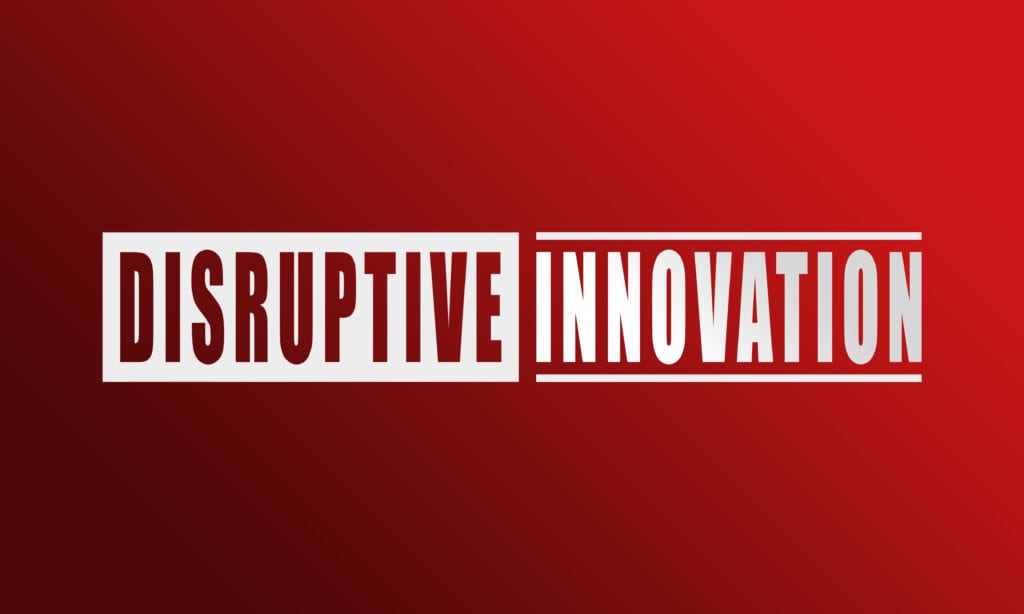

Breakthrough or disruptive Innovation is an immense change from the traditional way business is always done, giving consumers something demonstrably new. Disruptive Innovation stirs up the marketplace and brings a wow-factor to the consumers of such a product or even service. Breakthrough or disruptive Innovation produces a noticeable competitive edge for a while in the marketplace (e.g., manufacturing new car models, adding new features to mobile phones, etc.).
#3. Transformational Innovation


Transformational Innovation refers to but is not limited to the introduction of new technology or service that formulates a new industry that transforms the way we live and work. This kind of Innovation often eliminates existing industries or, at a minimum, exclusively modifies them (e.g., Artificial Intelligence (AI), Robots, etc.).
Benefits of Innovation


Innovation brings various benefits to the consumers and the organizations that are championing the shift. Innovation does not come empty-handed. Those that court it receive the sundry benefits that come with it. If harnessed correctly, companies shift into the gear of greater achievements and purpose. The various benefits of Innovation are what motivates organizations to invest in it. Some of the benefits of the discoveries that organizations make are as follows:
(a). Increase in Profit/Margins:


Organizations that make the right decision in releasing the right product at the right time stand the chance of making a lot of profit. It all hinges on making the right business decisions in satisfying a particular pain point at the right time. That makes all the difference that causes profits to scale up. Innovation keeps you profitable as a business.
(b). Product Differentiation:


Innovation gives organizations a chance to differentiate or multiply their growth opportunities via the introduction of various ranges of products and services. Product differentiation gives consumers options in their choice range of products and services.
(c). Satisfying Consumer Needs:


Companies innovate as a measure to satisfy the needs of the consumers. The demands of consumers shift all the time. Hence, in other to remain relevant in the marketplace, companies and organizations are bound to continue changing or innovating their products and services.
(d). Keeping or Increasing Market Quota:


The key to staying relevant in the marketplace hinges on maintaining or increasing your market quota or market share as an organization or business. For instance, Apple remains on the top of the list as a bestselling computer brand because they stay innovating regularly.


“Trust the young people; trust this generation’s Innovation. They’re making things, changing Innovation every day. And all the consumers are the same: they want new things, they want cheap things, they want good things, they want unique things. If we can create these kinds of things for consumers, they will come.” — Jack Ma.
(e). Securing a Strategic Market Position:


In conjunction with increased market share, new discoveries also help organizations achieve strategic market positioning. For instance, Amazon has a strategic market positioning as it leads in the E-Commerce world as the world’s most innovative and most profitable E-Commerce and Tech giant. Innovation is a fundamental factor that helps them stay on top.
(f). Use of New Business Opportunities:


Innovation provides more channels for business growth for organizations. For instance, businesses and organizations innovate to create new business outlets or opportunities to increase their profitability. It is particularly dicey for businesses and organizations to put their eggs in one basket in our day and time. For this reason, most companies always aim to diversify.
(g). Market Research and Development:


Innovation helps organizations expand the research and development of specific products and services that they offer. At times, these developments lead to further development initiatives in that particular niche. It establishes a chain reaction in the process of discovery. If they hit the jackpot in developing a killer product, it boosts the organization’s profitability.
(h). Increased Competitive Advantage:


Staying innovative gives organizations a competitive edge in the markets. Every organization or business wants to stay ahead of the competition. Innovation is the catalyst that proffers organizations this sort of advantage. It keeps organizations ahead, screaming to their competition, “Catch me if you can!”
Problems of Innovation


We have seen in the preceding paragraphs the pros or benefits of Innovation. In the same light, there are also some considerations or problems. However, the concept of Innovation in organizations is to stay optimistic and hope that the odds are always in your favor. However, it would be foolish to address the positives without taking some time to establish what could go wrong in Innovation. Hence, let us move forward and consider some of the cons of Innovation.
First, businesses risk ruining reputation if the new product is of poor quality. Hence, they must do their due diligence to ensure that the quality is topnotch. No organization ever wants to join the chronicles of flopped company products. Trust me, many of them listing them will form an article of its own. However, USA Today’s Op-Ed titled, “When product launches go awry: 50 worst product flops of all time,” does a great job with this listicle highlighting different company flops that never took flight.
Second, risk of transfer of intellectual property, trade secrets, or know-how. When Innovation is done in partnership with other organizations, there is a risk of transfer of intellectual property, trade secrets, or know-how. This can create a vulnerability to these trade secrets should they not be guarded well due to the merger. If leaked, competing companies could access valuable knowledge and transcendent advantage to compete fiercely in the marketplace.
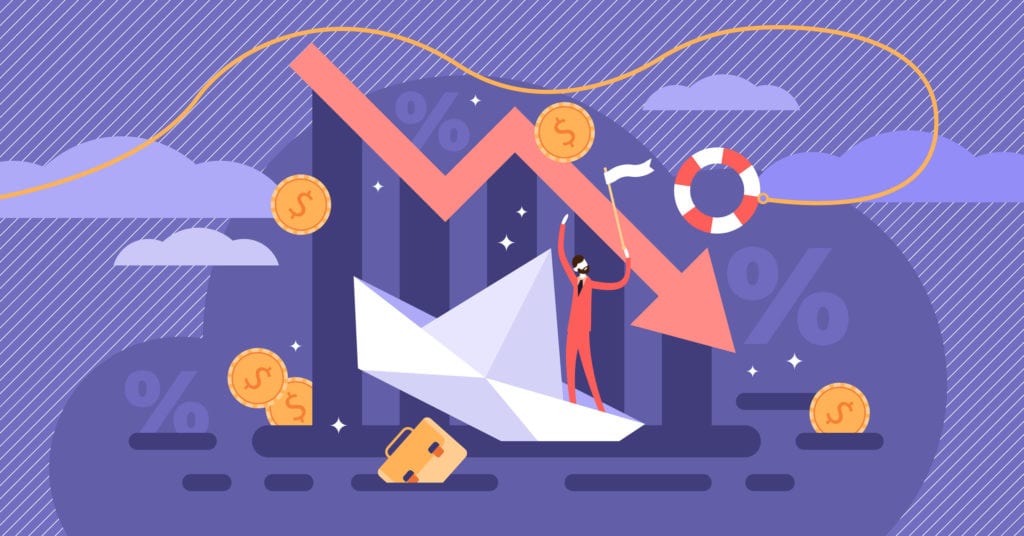

Third, a company running out of money. A company can run out of money if they invest too much and don’t get products to market quickly. Startups can also run out of money if they don’t have enough money to infuse into their operation to keep their business afloat. Also, sitting on excess inventory is always a bad deal for any corporation. Less haste, less waste. Some companies that ran out of money are Panda TV, Arrivo, ReVision Optics, Beepi, Aquion Energy, to mention but a few. The CBI Insights’ “208 of the Biggest, Costliest Startup Failures of all Time” highlighted more companies that went defunct because of running out of money.
Fourth, unforeseen limitations can prevent organizations from innovating. It also becomes a problem when organizations can innovate; however, due to unexpected limitations, it bars them from the ability to innovate and scale-up. Such limitations could be a lack of adequate financial resources to achieve the scale they desire. For instance, there are times that entrepreneurs have great ideas that can take flight. However, due to inadequate funding, a health situation, or arising challenges, that stalls the idea from moving forward.
Fifth, spreading too thin too fast. Companies that spread too thin too fast can shipwreck their Innovation efforts. For instance, spreading too thin too fast can lead to an excessive focus on developing new products at the expense of quality. Marketing of existing products can negatively affect its image and profitability.
Why Companies Must Stay Innovative
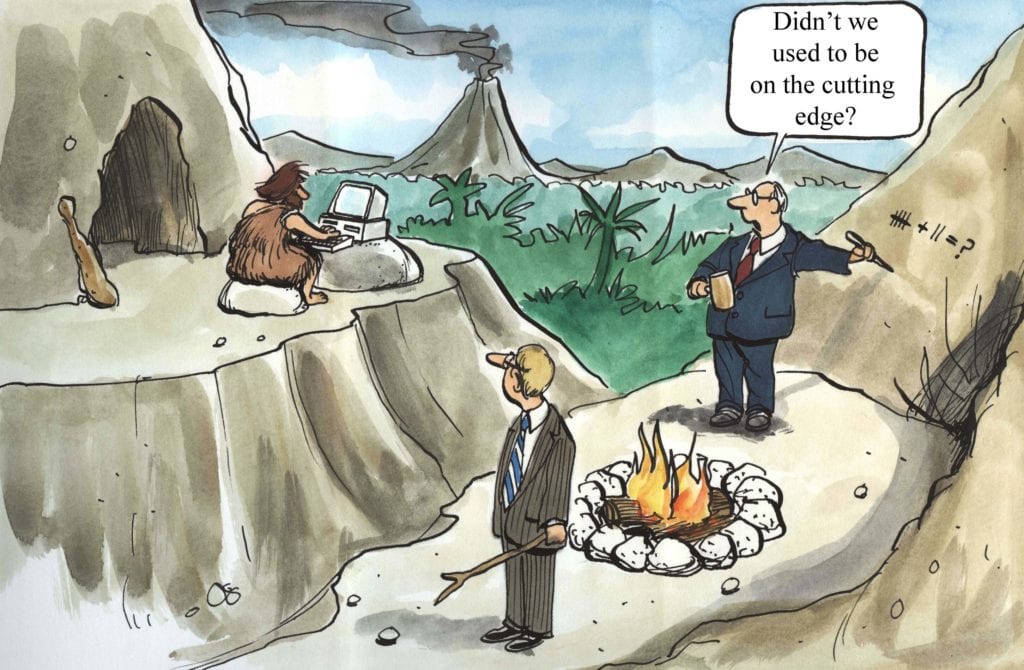

A Ginni Rometty once quipped, “The only way you survive is to continuously transform into something else. It’s this idea of continuous transformation that makes you an innovation company.” In 2013 during the press conference to announce the mobile phone branch of NOKIA to be sold to Microsoft, Nokia CEO Stephen Elop ended his speech saying, “We didn’t do anything wrong, but somehow, we lost.” Well, the truth is hardwired into the fact of failing to innovate. If you fail to change, morph, to stay in pace with consumers’ changing needs, you will lose. To win in the marketplace, you must continue to be innovative, or else you will slowly drift back to the stone ages of competitiveness.
Consider the words of the late co-founder of Apple, Steve Jobs, during an interview. He said, “If we had done what the people wanted, we would have given them computers, but we didn’t, so we waited few years and gave them the next generation of computers.” How profound. Steve Jobs’ statement says all we need to know about Innovation, with the keyword there being “NEXT.” While Nokia kept doing more of the same thing, Apple studied the mobile phone markets and only made improvements on it; they didn’t invent or re-invent the phone. They just made extensive improvements to it. And today, Apple is one of the highest-selling phone brands globally—thanks to the sole power of Innovation. Nokia didn’t change, they didn’t transform, and they soon felt the ugly effect of not being innovative enough to survive the gruesome claws of the markets.


Innovation is the transcendent key to survive today’s highly demanding and competitive markets. Planning not to innovate is deliberately planning to fail. Please don’t become a Nokia that loses its groove and becomes a bought-over pet project of a giant (i.e., Microsoft). Embrace Innovation and change, and you will be on the upward trajectory of becoming a disruptive force in your operation market. Never forget this statement by Winston Churchill that “Without tradition, art is a flock of sheep without a shepherd. Without Innovation, it is a corpse.” Hence, if you fail to innovate, your idea is on its way to becoming a corpse and a failure of distinguished proportions. Innovate yesterday! Innovate today! Innovate tomorrow! By all means, continue to innovate.
How to Be Innovative


So far, we have seen what Innovation is from different angles. We have also seen the various types of Innovation—it can be incremental, disruptive, and transformational. We have seen the multiple benefits of Innovation—which primarily hinges on a continuous improvement and profitability platform. We have also seen some of the cons of Innovation. We have seen why companies should stay innovative—the consumer wants and demands are not static, so companies must innovate to stay abreast with the trends.
Okay, it’s time to innovate. It’s time to disrupt the marketplace with your new idea. But how? Where do you begin? What steps must you take to start the revolutionary trend that can transform the market? The rhetoric sage would rightly ask. To be innovative, you must be ready to embrace a new way of thinking. You must be prepared to adopt a new way of doing things. Here are some steps to becoming innovative.
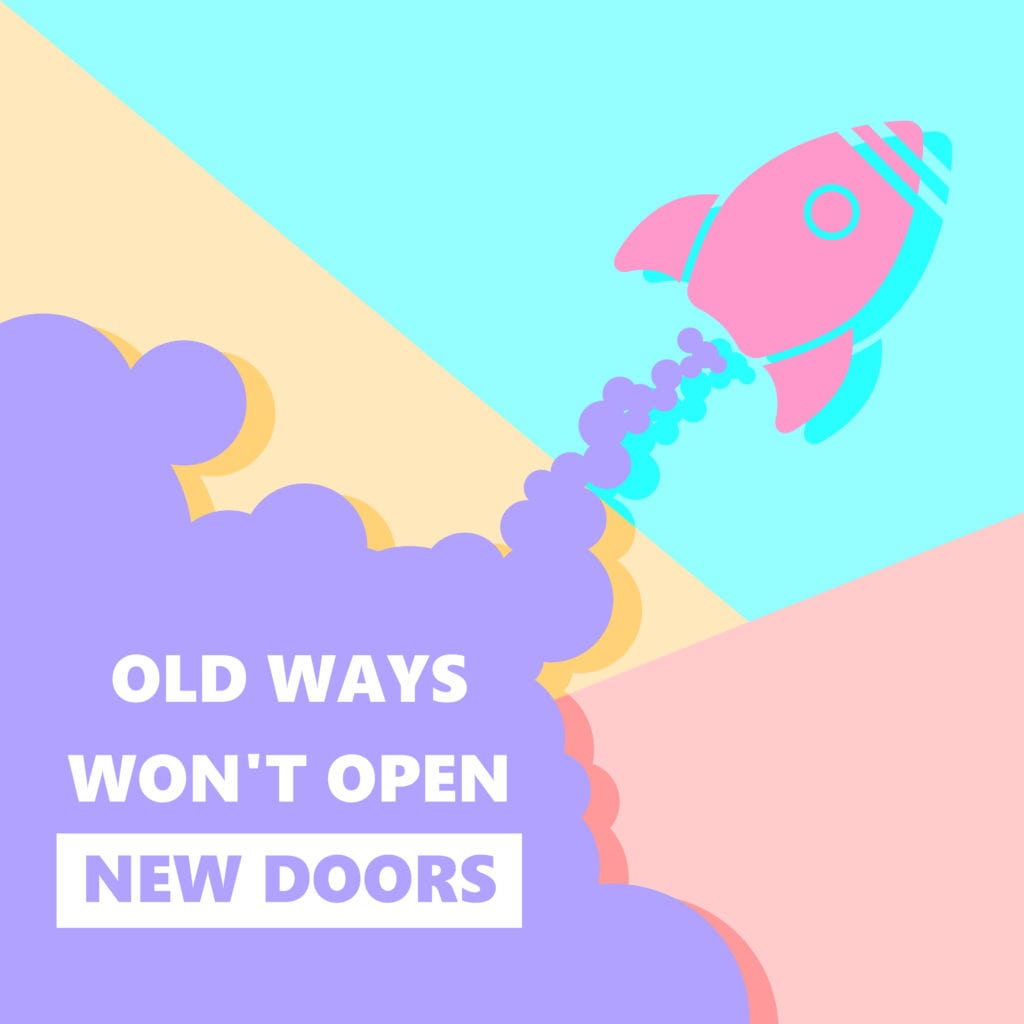

First, analyze the market environment trends. For instance, you must first gain an overview of your industry of focus. For example, what are your customers’ wants and needs? Next, narrow and needle down on your target market. Then, know the competition—what are your competitor’s advancements and products? Finally, drill-down and establish your Innovation market entry price.
Second, consult with customers and employees for ideas. Where best to gain new ideas to launch you and your organization into a world of transformation than the customers? Take the time to sample your customers’ opinions via surveys research, experimental research, cohort studies, panel studies, etc. Learn from your customers how to improve the products and services you currently offer.


Third, be open to new ideas and be ready to adapt to change. Innovativeness requires that organizations be open to new ideas and be prepared to adapt to change to influence technological innovations. Organizations stuck in their old ways of doing things may end up like the Nokias of this world. To be innovative, you must be ready to adopt a new way of doing things! Old ways will never open new doors.
Fourth, become innovative by association. The law of association is beneficial in becoming innovative. For instance, if you are an entrepreneur, it would benefit you to move with great thinking people who are innovative, creative, and risk-takers. Ensure that you forge a value-added team or crew that is creative and innovative. It will also rub off on you.
“I believe you have to be willing to be misunderstood if you’re going to innovate. “— Jeff Bezos.
To ground your organization in Innovation, you must also endeavor to employ and build your team to solve problems using creative thinking. These steps on innovating are not exhaustive but a perfect place to start the process. There could be more ways on how to be innovative. Let us move forward to looking at more facts about the role of Innovation in business growth.
10 Facts About the Role of Innovation in Business Growth


Being innovative can be a success marker and a core determiner of business growth. An Adena Friedman once said that “New products, new markets, new investors, and new ways of doing things are the lifeblood of growth. And while each Innovation carries potential risk, businesses that don’t innovate will eventually diminish.” Innovation is the lifeblood of growth. Businesses that want to see change and profitability choose Innovation. Let us now consider ten facts about the role of Innovation in business growth.
#1. Innovation Creates a Domino Effect


One Innovation here inspires another there—it creates a domino effect. Have you ever noticed how every top-selling car and smartphone maker comes out with new models every time? The process of Innovation inspires other companies to think one step ahead by asking the burning question, “How can we be better?” With each Innovation by one company, another company somewhere is looking for how to better what that company has done—it sets off some change chain reaction—a domino effect of some sort. This process of coming up with new ideas every time affects the entire market, and in turn, one Innovation somewhere inspires another innovation elsewhere.
#2. Global Competition


Your competition isn’t always localized in today’s businesses, even if it is a million miles away. Thanks to globalization. Today, clients leverage the power of the Internet of Things (IoT) to search for better customer service, lower prices, and faster production, to mention but a few. Not embracing Innovation could make your business suffer immensely. The reason is that it is now accessible for people to know and reach out to competitors around the globe. Hence, Innovation boosts businesses’ growth globally and does not show any sign of tapering off soon.
#3. Attract the Best Workers


The human element is a fundamental factor in business growth. Versatile and well-versed people want to work for companies that are at the forefront of Innovation. You have no chance of attracting someone who will invent the next big thing or invention unless your company has a history of creating big things. Innovative companies attract innovative talent. This helps to foster the upward growth trajectory of the business. Innovation does not happen in a vacuum. People make Innovation happen!
#4. More for More


If a company can become more innovative, it will experience more growth. It gives them the edge and ability to stand out from the competition even more. It is a differentiation factor that gives them a competitive advantage and a chance to become a market leader in their niche. In so doing, they can meet customers’ needs in ways never imagined. It is a more for more scenario, a benefit of robust and golden proportions.
#5. Stand Out from Competitors


Innovation makes you stand out from the competition—Innovation gives you wings. The right kind of Innovation allows you to offer something unique to your customers. Top innovators take popular products in the market and make them even better suited for their consumers. Making such moves allows brands to stand out in the marketplace. This gives companies the chance to stand out from their competitors and makes it easy for companies to increase their revenue and profitability.
#6. All Businesses are Born Out of Innovation


There is nothing new to be invented because all that needs to be developed has already been made. What is going on today is re-invention—finding out new ways to make things better. It’s akin to the interlocking of similar gears that keeps the machinery of Innovation moving forward. As King Solomon of Israel once said that “There is nothing new under the sun. History merely repeats itself. Nothing is truly new; it has all been done or said before. What can you point to that is new? How do you know it didn’t exist long ages ago? We don’t remember what happened in those former times, and in the future generations, no one will remember what we have done back here.” Since this is the case, then every organization exists to make better already-existing inventions. One can say that all businesses are born out of Innovation.
#7. Meet Customer Needs


Innovation plays a core role in helping organizations meet customer needs. The needs of customers are changing daily, to say the very least. Innovators use algorithms to prognosticate changes in the marketplace and provide solutions before people even realize that they need them. You cannot meet the prolonged needs of your customer base unless you are willing to embrace Innovation. Choosing to remain dormant will lead to your business struggling and eventually folding-up if nothing is done to re-invent the status quo. You have to engineer new ideas that excite your customers.
#8. Immense Growth


Innovation makes the concept of business growth effortless, notwithstanding the size of the company. You can technically say that any corporation’s growth rate is directly proportional to its ability to innovate. The failure of a business entity to innovate is tantamount to failure. Failure to innovate is signing a Deathwish to become defunct eventually. Organizations that failed to innovate with the competition are soon run out of business or bought over by those that are innovating and changing with the trends in the marketplace. You might be a small startup now, but if you innovate, you can grow your business tremendously, even in a short time. Innovation will give you a boost; Innovation will provide you with wings to soar higher and higher.
#9. The “It” Company


Should it amaze you that heads are necessitated to turn when corporations innovate? Umm, no. I don’t think so. Everyone is definitely drawn to the success that spawns with Innovation. Because of this, job seekers looking at sundry opportunities to improve their careers look to the organic organizations that embrace Innovation. They are drawn to the change and the receptive ambiance of budding ideas that these organizations effuse. These organizations attract the crème de la crème of talents in the job market—they are talent magnets, to say the very least. Startup organizations show a heightened appeal because they are vanguards turning the traditional work model on its head. This new model to become leaders can come from distributed companies and the elimination of hierarchies. It becomes a win-win for the employer and employees as organizational morale and brand adoption balloons. Innovation delivers far-reaching benefits to your team, workplace, and brand. You quickly become the “It” Company—a company with je ne sais quoi, or the indefinable something that makes the extra organization special. And, in this highly connected world, it will keep you relevant, adaptive, and ahead of the game.
#10. The Key of Survival


To avoid going obsolete and moribund, Innovation is the most critical component for business survival in today’s highly demanding and competitive markets. Because of how volatile consumers’ needs are constantly changing, Innovation becomes the prime key to any business’s survival. The fact is that companies need to frequently adapt to the changing needs of consumers in other to stay alive and relevant. Failure to adapt is business cyanide that will cause certain death of the business. Businesses must adapt or die; that is the only way to stay relevant; that is the only way to stay alive and ahead in the business marketplace.
It’s time to Innovate—Birth an idea.


We have looked at the many facets of Innovation via this comprehensive listicle. Concerning types of Innovation, we have incremental, breakthrough or disruptive, and transformational Innovation. Innovation can be beneficial in various ways. It increases profit margins, creates an ability to differentiate products, satisfies consumer needs, maintains or increases the market quota, secures a strategic market position, has more channels for business growth, improves market research and development, and increases competitive advantage in the marketplace. With all these benefits, why would any organization not want to innovate? The benefits sure outweigh the considerations. Yes, there are some considerations.
What are some considerations of Innovation? First, your reputation is at risk if all goes wrong with the innovative process. Second, if not appropriately managed, trade secrets and organizations’ intellectual property may be at risk. Third, overspending on Innovation could also hurt the organization. Fourth, not having enough funds could also damage the organization that can innovate on the flip side. Finally, focusing on too much Innovation at the expense of quality products can hurt its image and profitability. Despite these considerations, it is still beneficial for companies to stay innovative to stay relevant and survive the ever-changing market landscape. Companies, to remain creative, must analyze market trends, harvest new ideas by consulting with consumers and employees, be adaptive to change, and don’t be too risk-averse.


Innovation plays a paramount role in business growth. First, it can lead to a chain reaction of sorts in the cycle of change—one Innovation inspires the next. Second, global competition balloons through Innovation. Third, organizations can grow their talent base through the magnetic pull it creates. Fourth, a win-win ambiance funnels-up through the creative spark—more Innovation, more growth. Fifth, organizations can separate themselves from the pack via Innovation. Sixth, it is the matrix of businesses. Seventh, it plays a core role in meeting customer needs. Eighth, it fosters growth in organizations. Ninth, it creates the company with an “it” factor. Finally, tenth, it is the key to survival.
“Without change, there is no innovation, creativity, or incentive for improvement. Those who initiate change will have a better opportunity to manage the change that is inevitable.” — William Pollard.
As we have stipulated above, we could espouse that there are technically no new inventions—everything that can be invented has been invented in a way. However, that doesn’t stop us from cudgeling our encephalic bundles in attempting to introduce something new—if it is genuinely unique. However, from an encouraging angle, we still have INNOVATION—the ability to make changes to things already established—finding new ways to do something—the ability to alter, the potential to disrupt. Consider that product or that service—study it deeply, ask questions if you must, and make it better than it already is. By all means, INNOVATE—it is the only way forward!




























Great writer, Thanks for delivering the outstanding blog. I found it informative. Best regards !!
Hello, I want to subscribe for this web site to obtain most recent updates, therefore where can i do it
please assist.